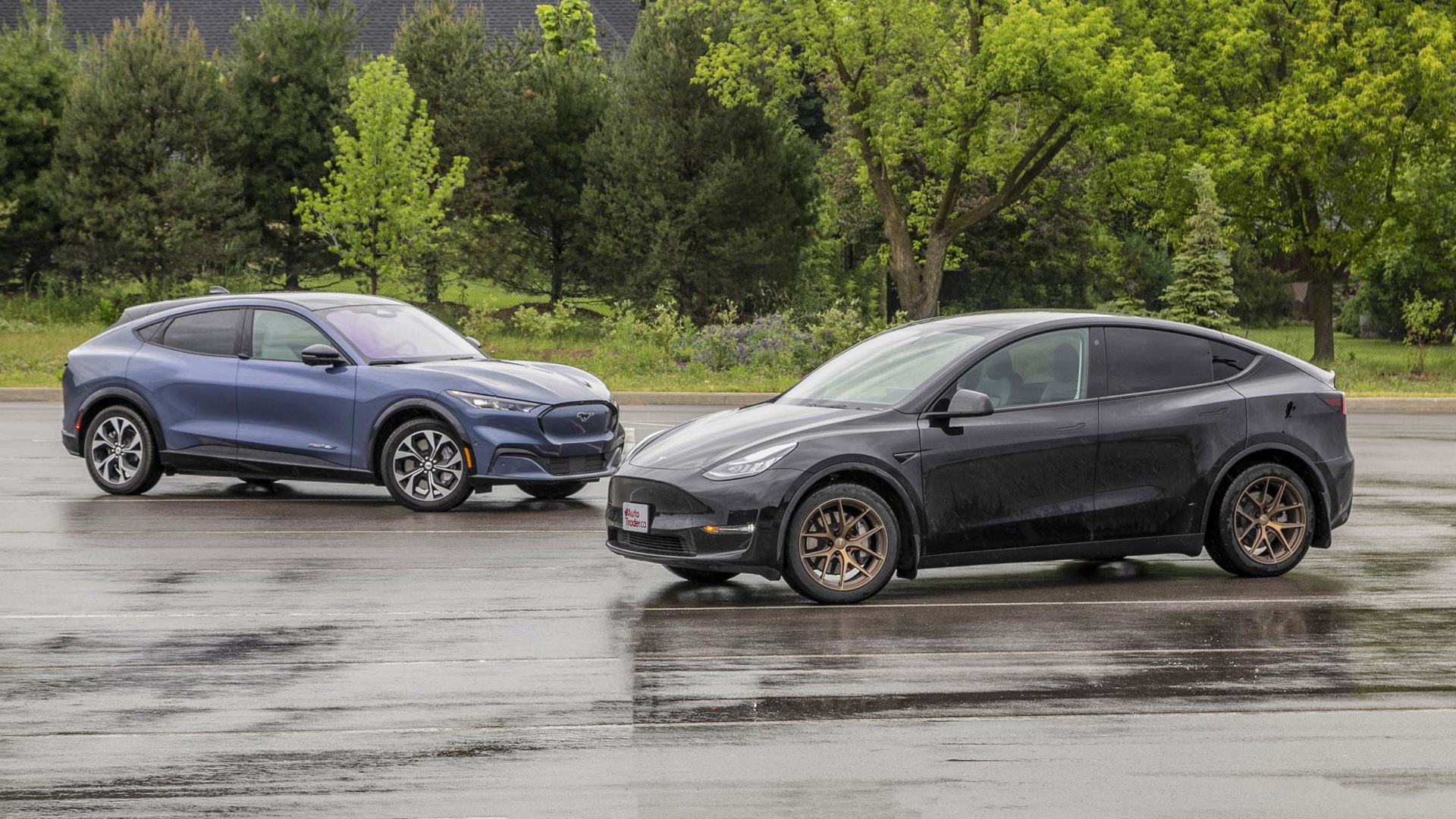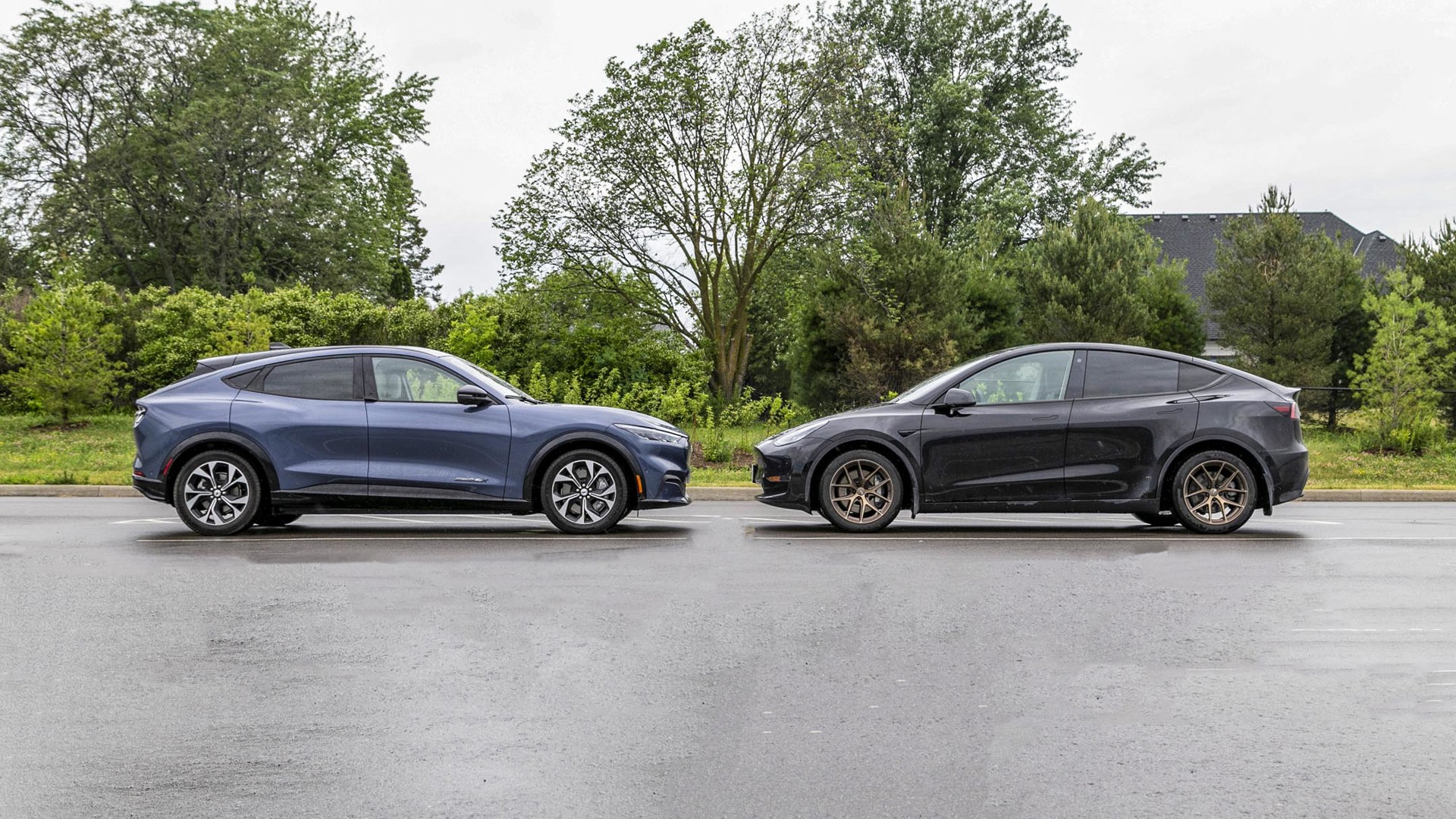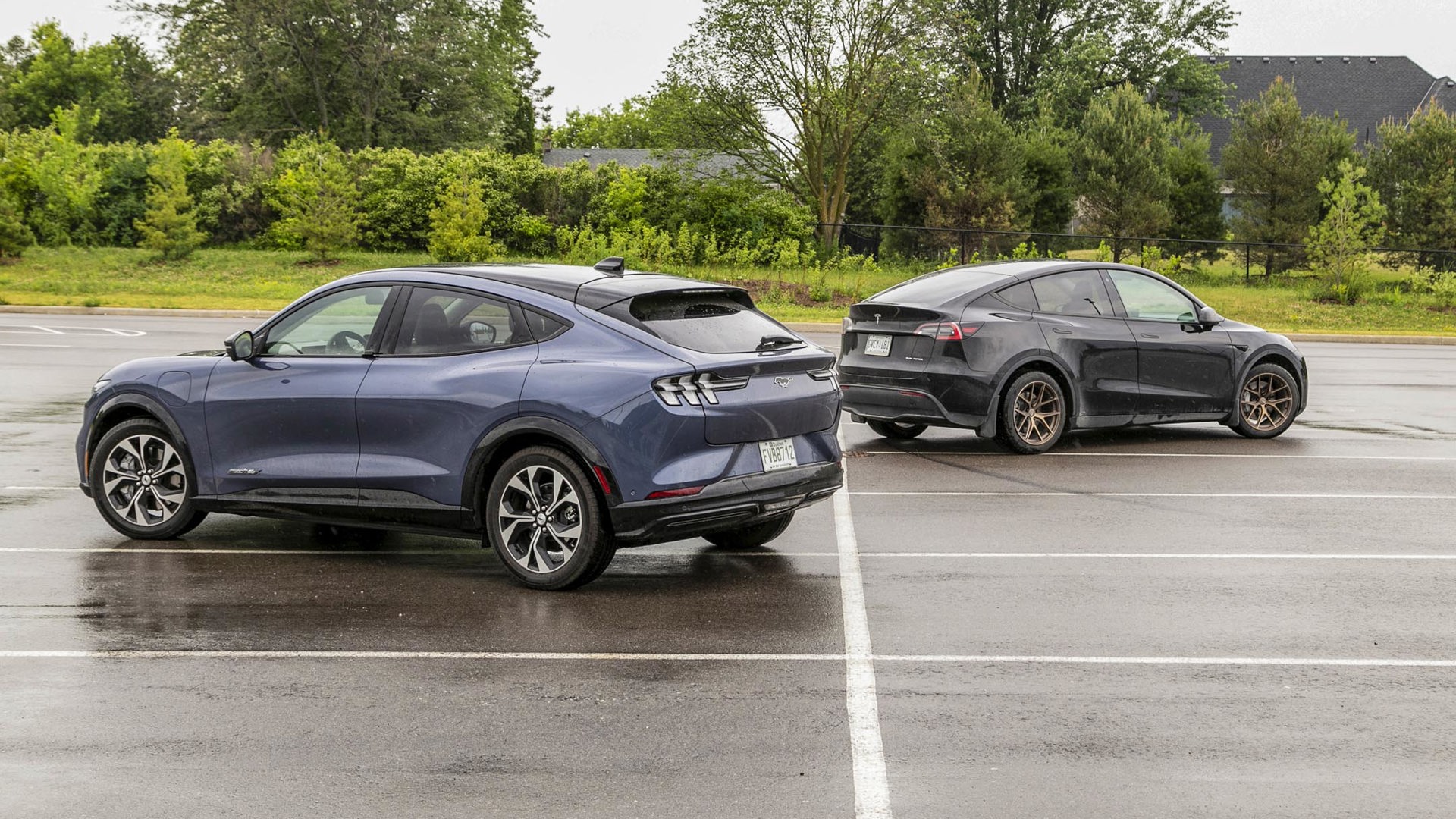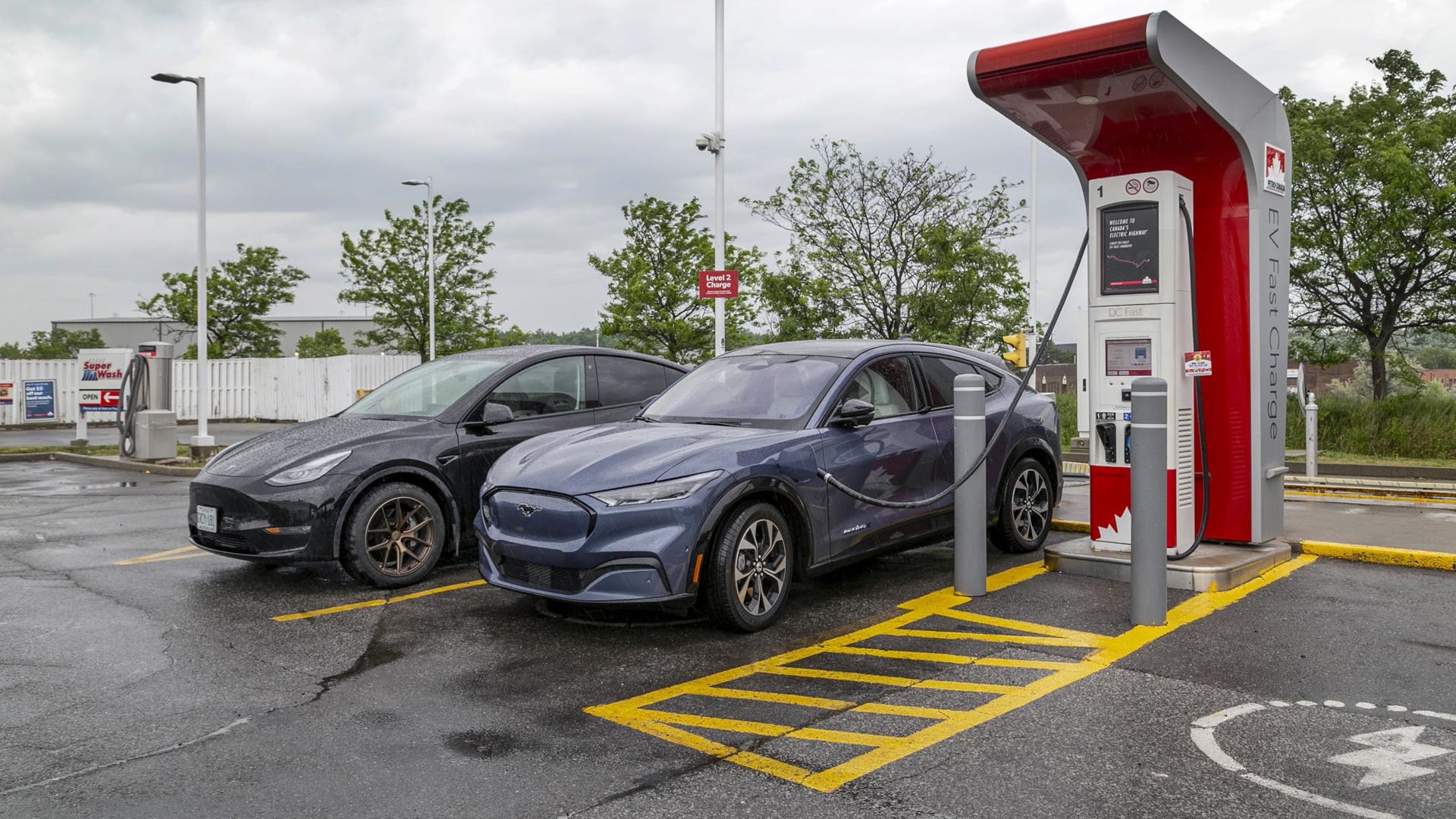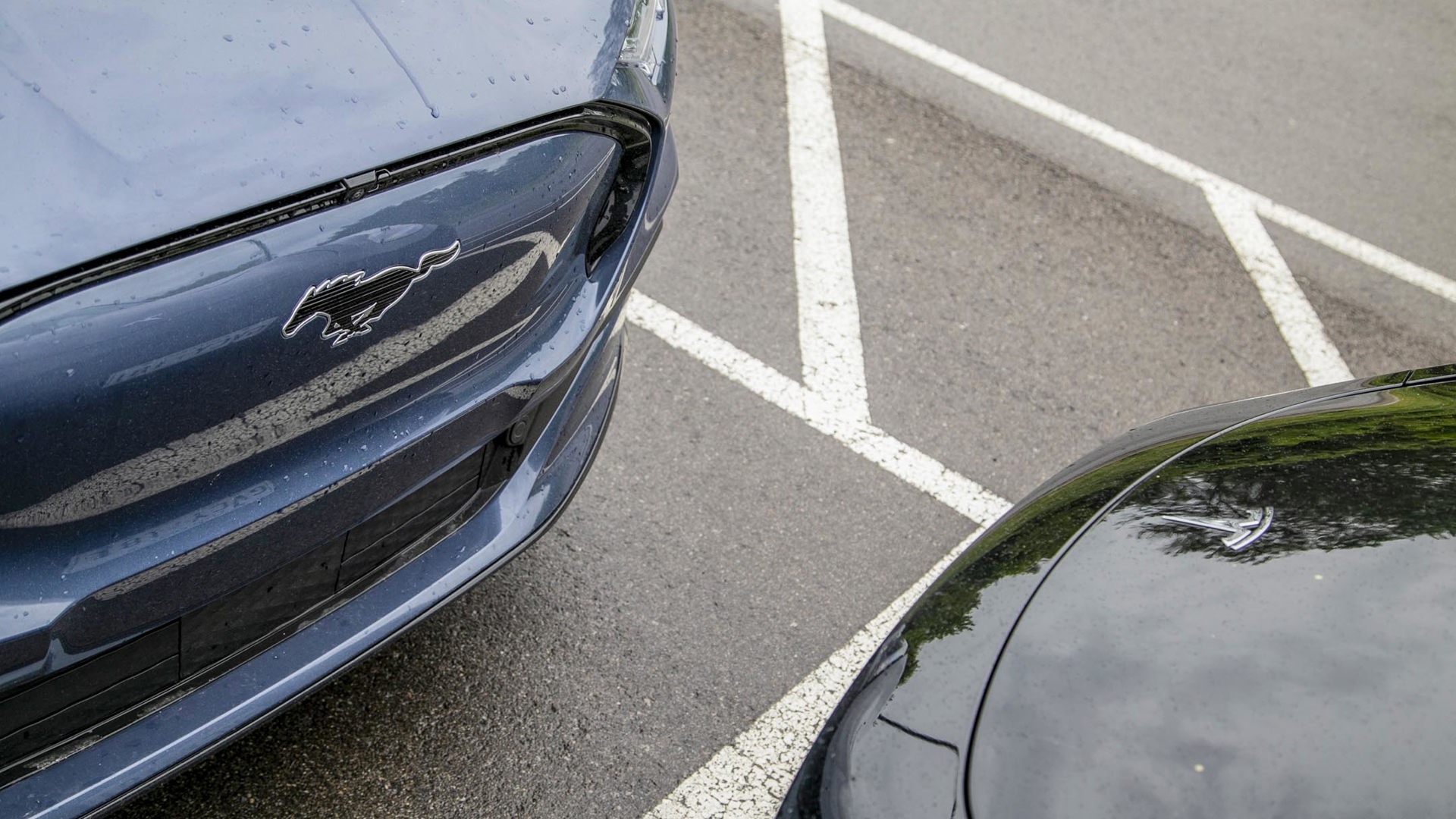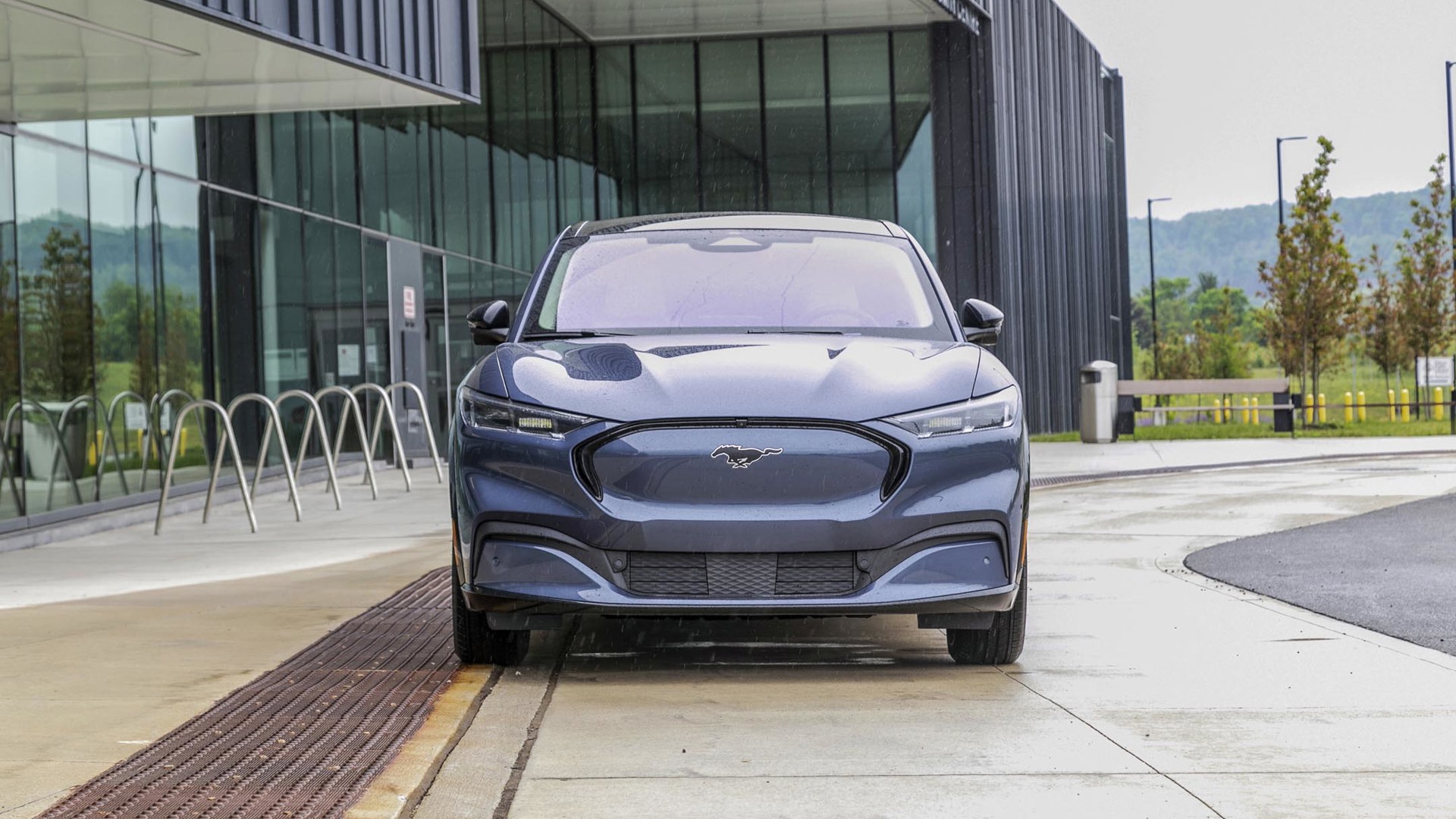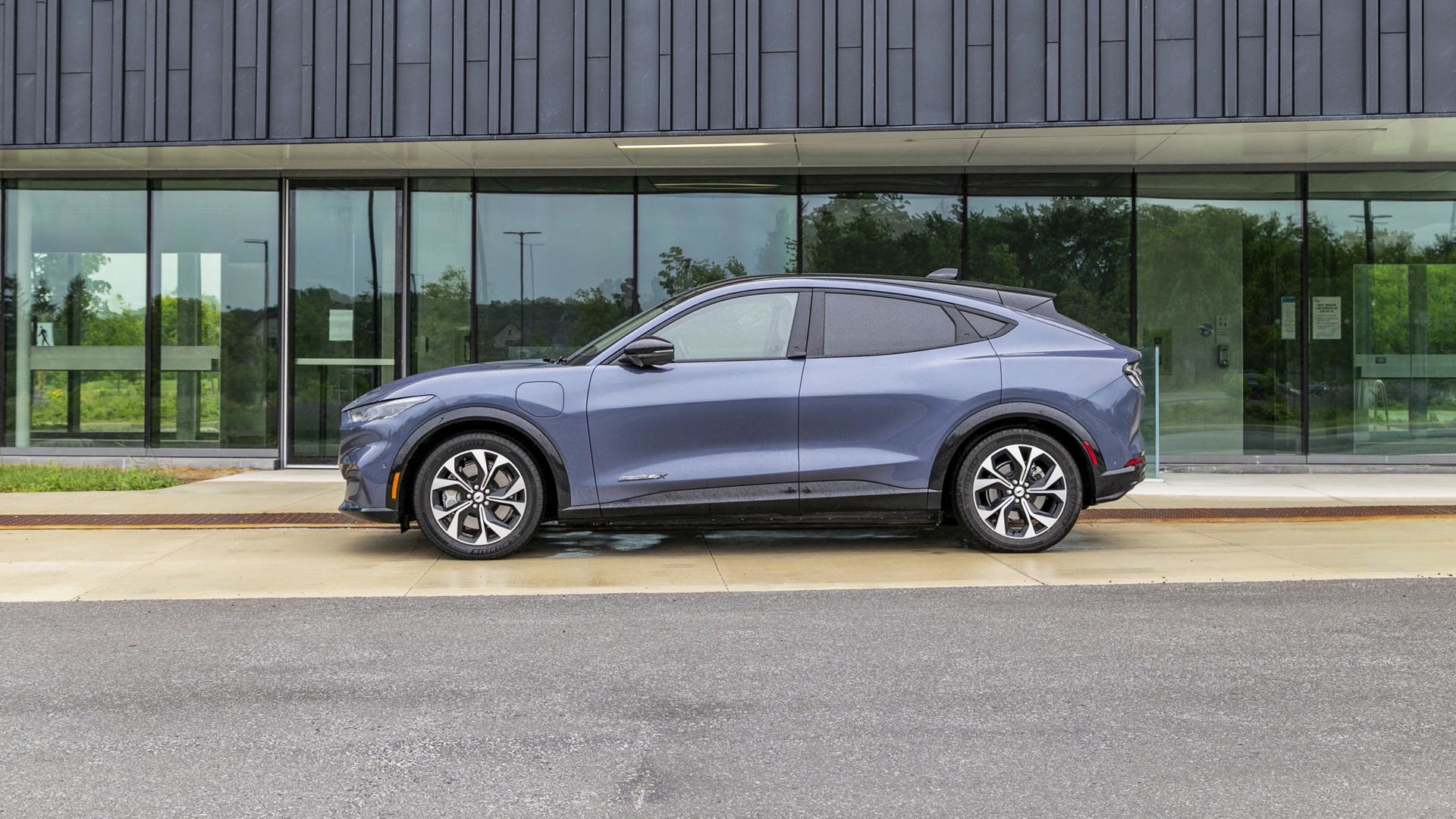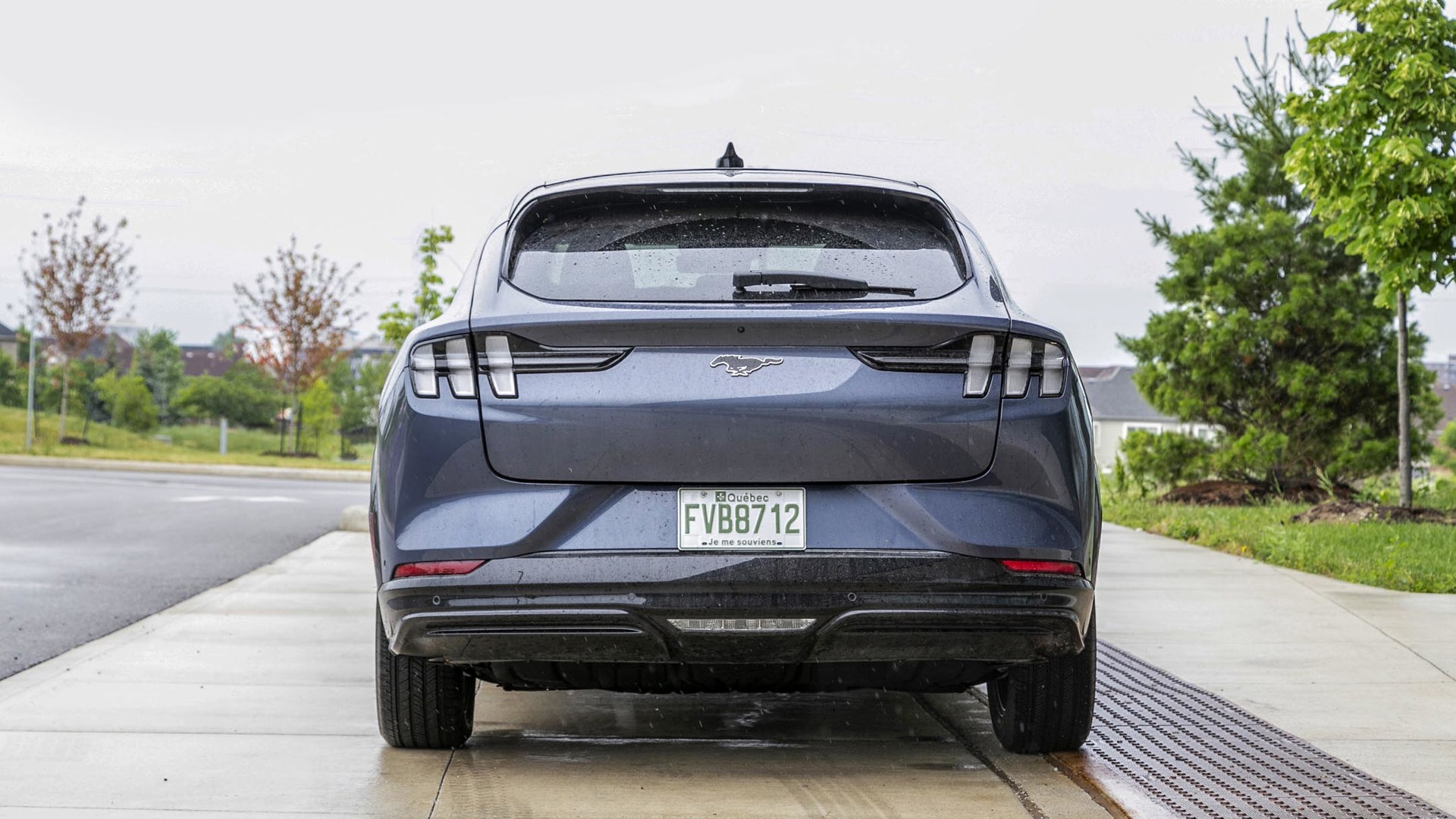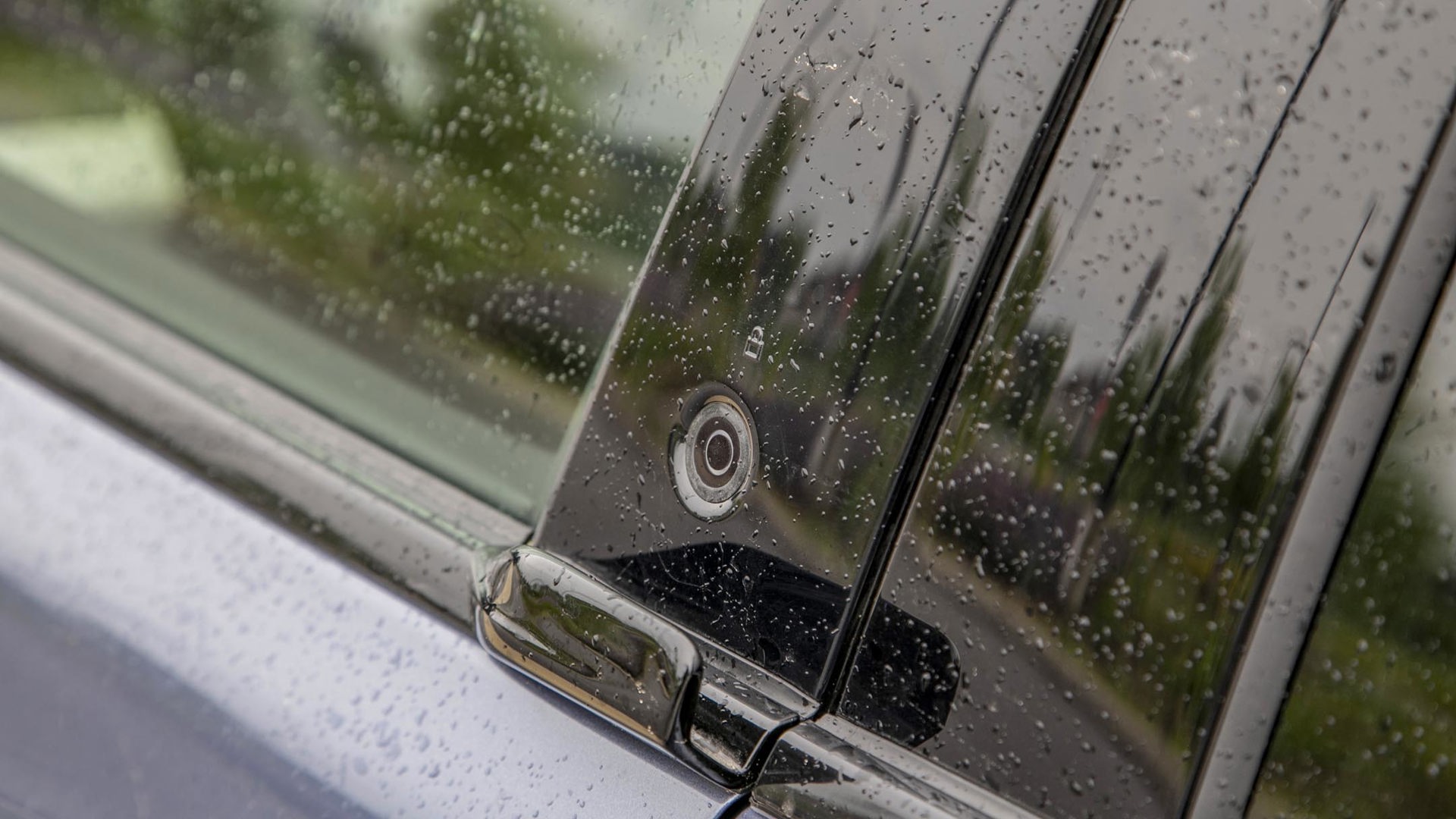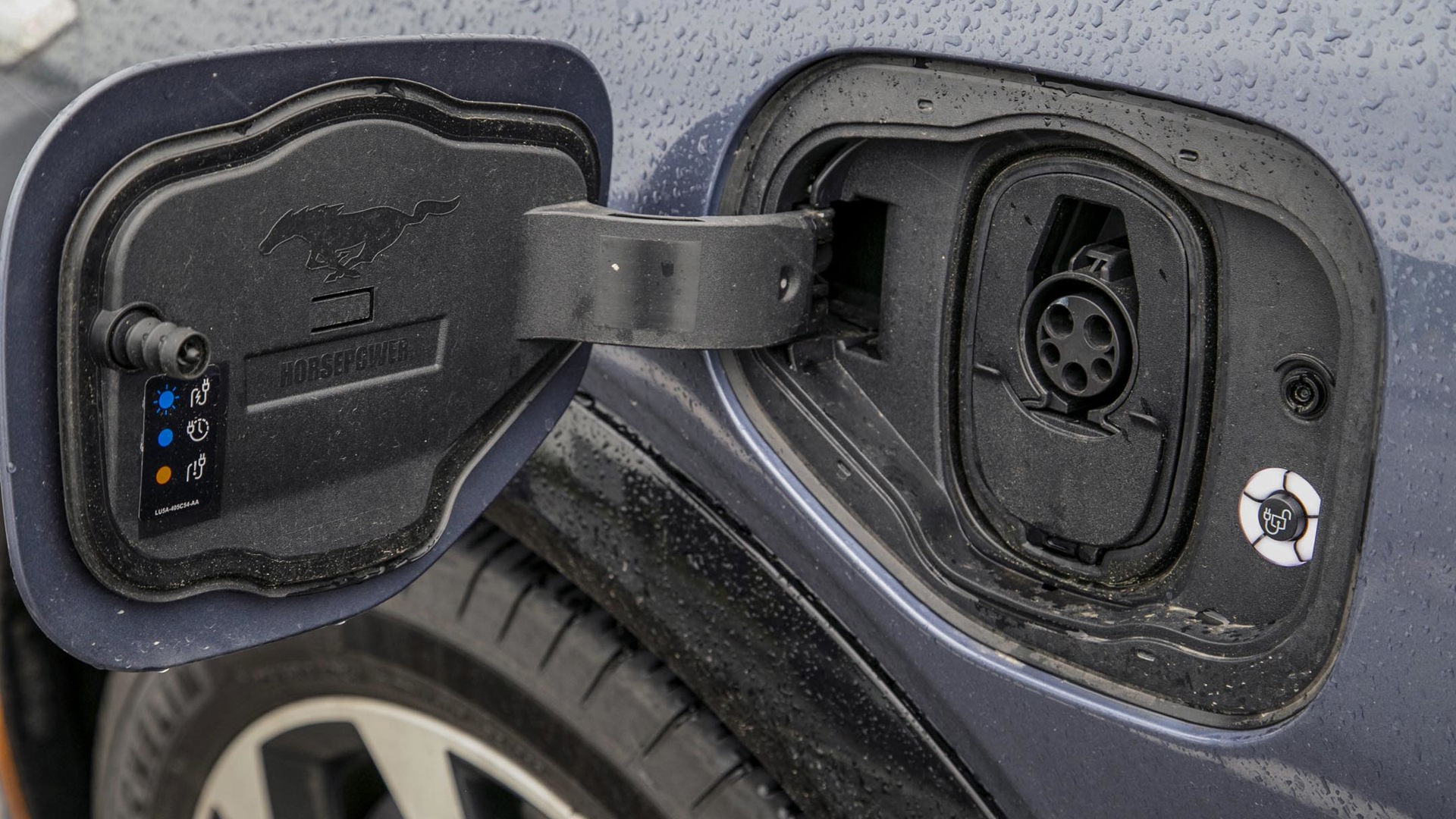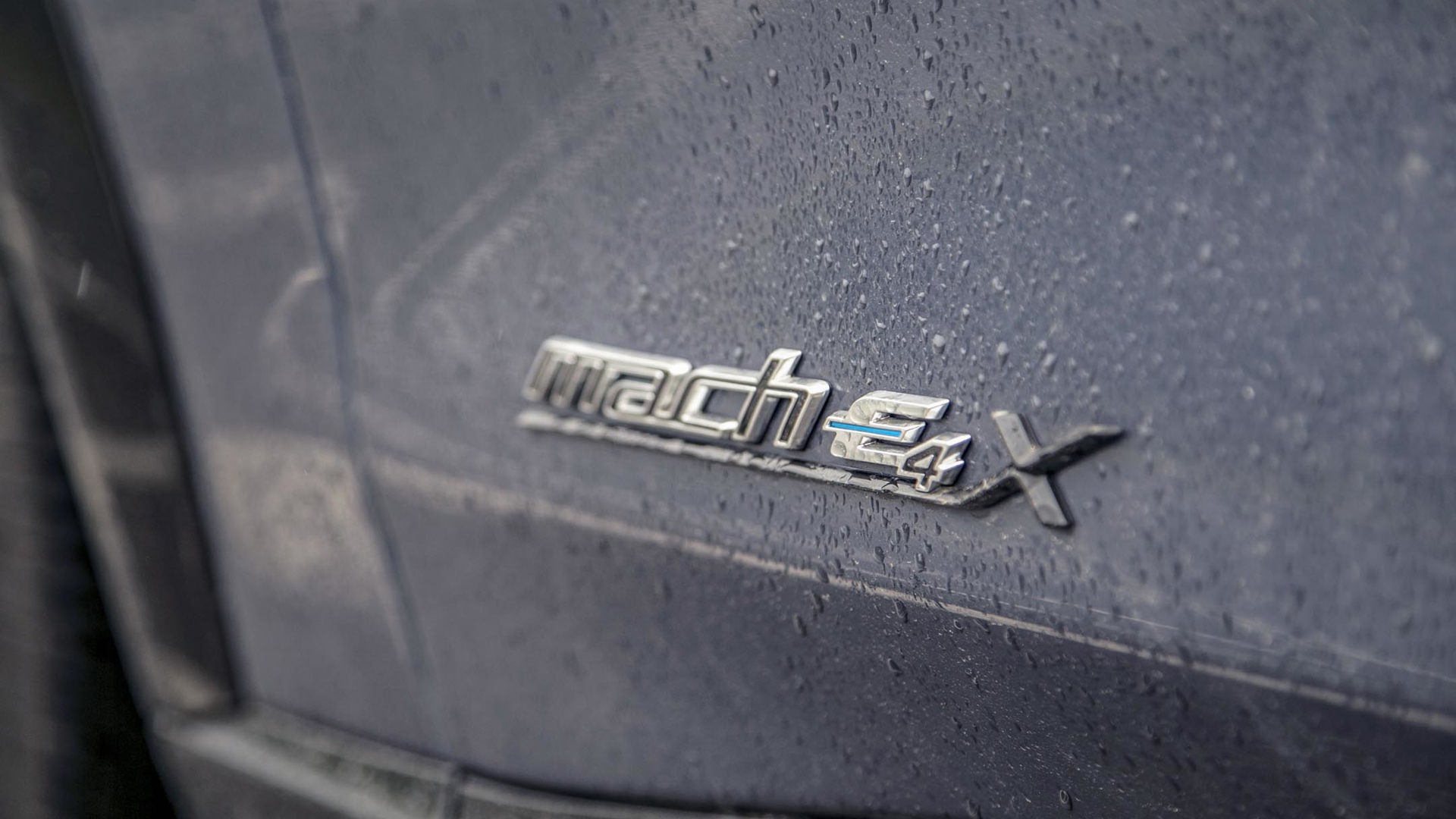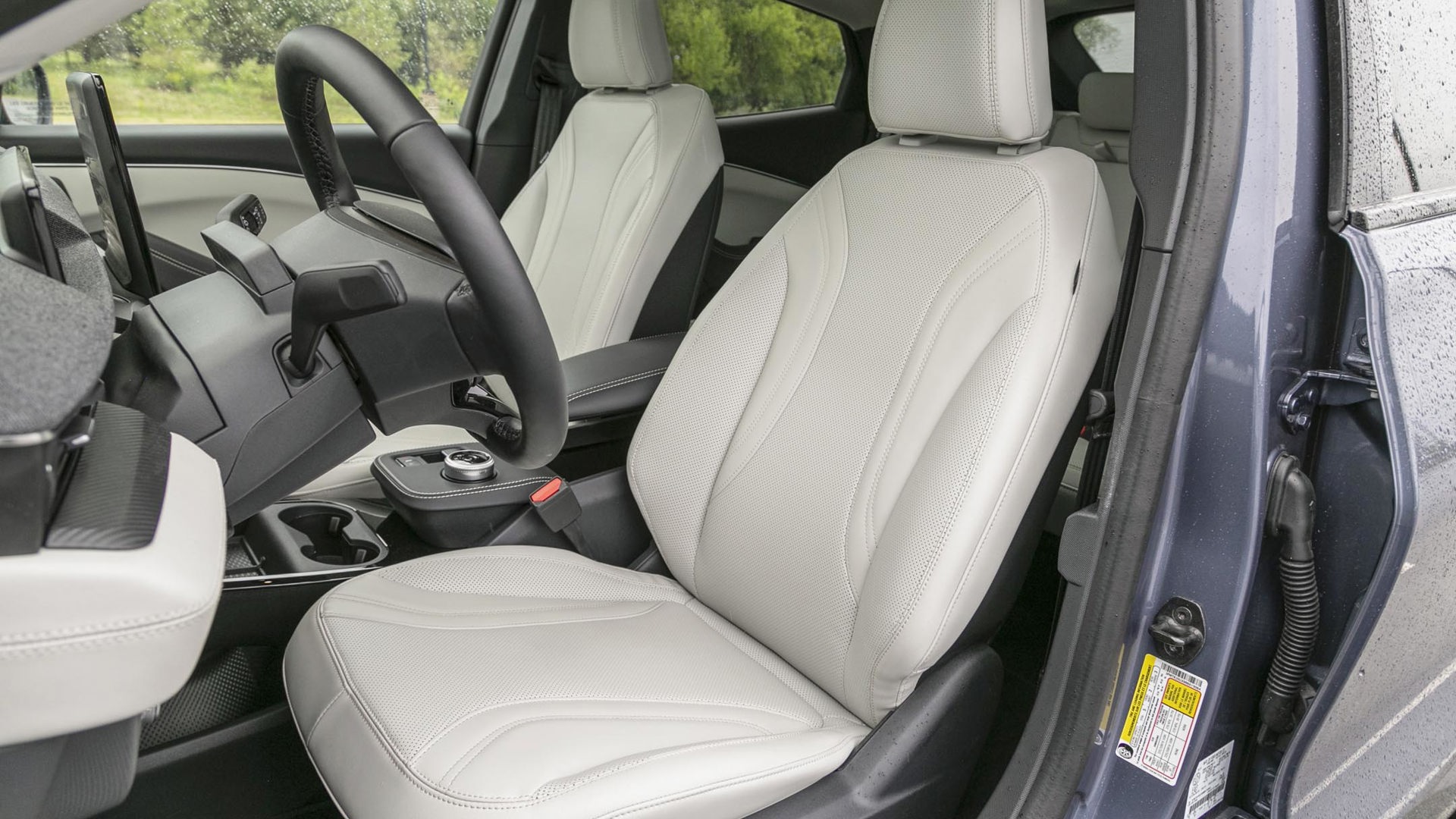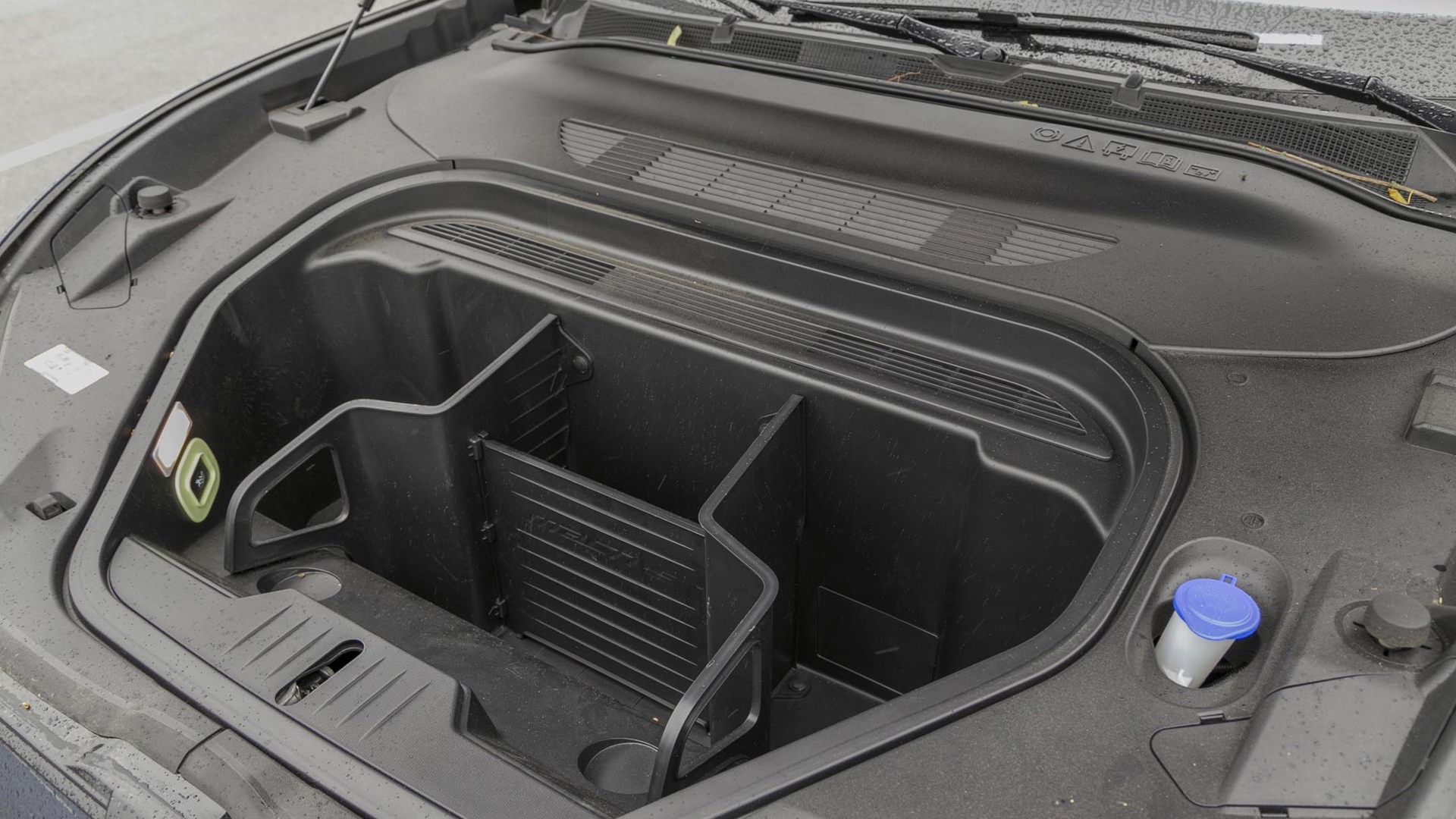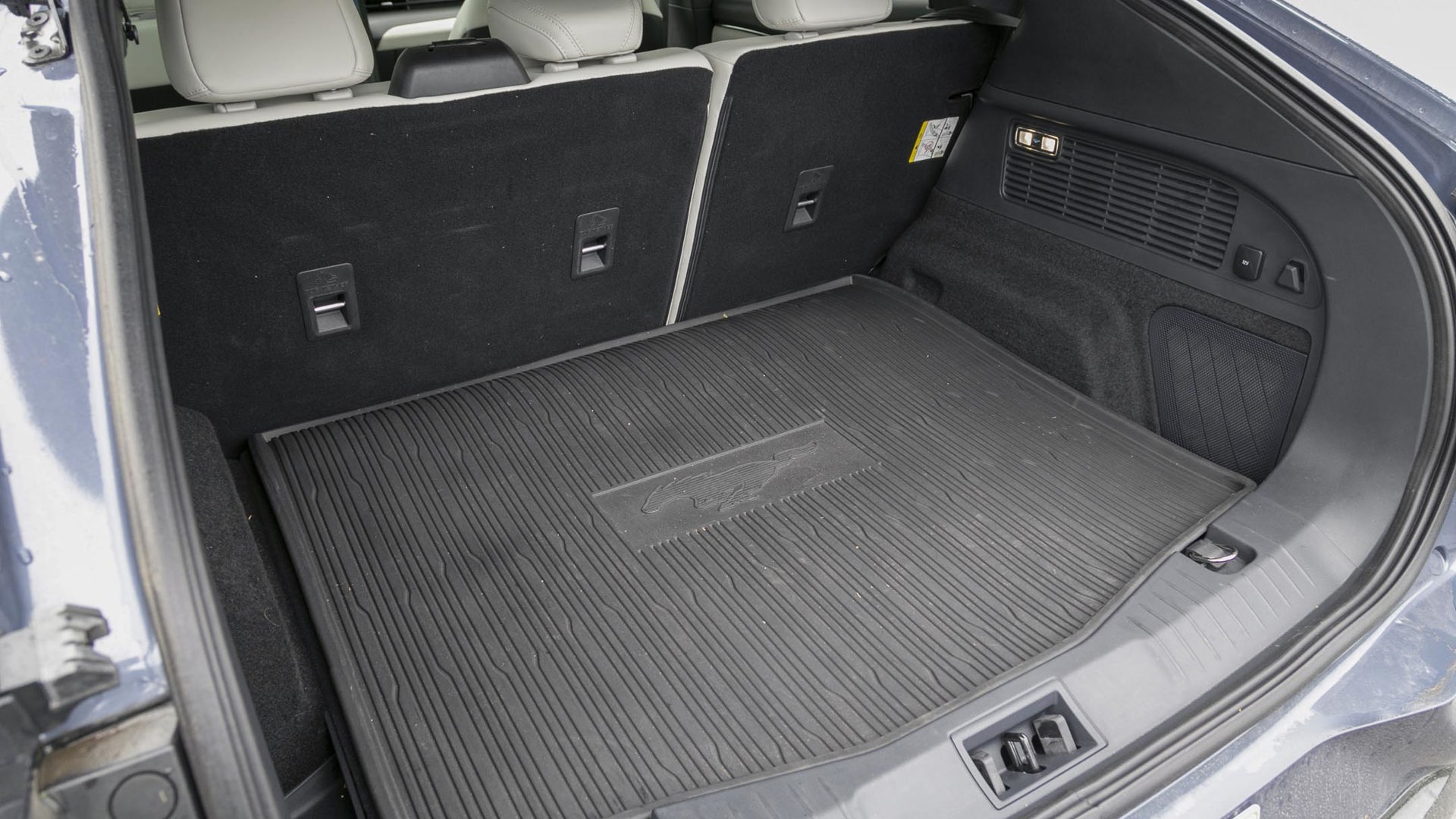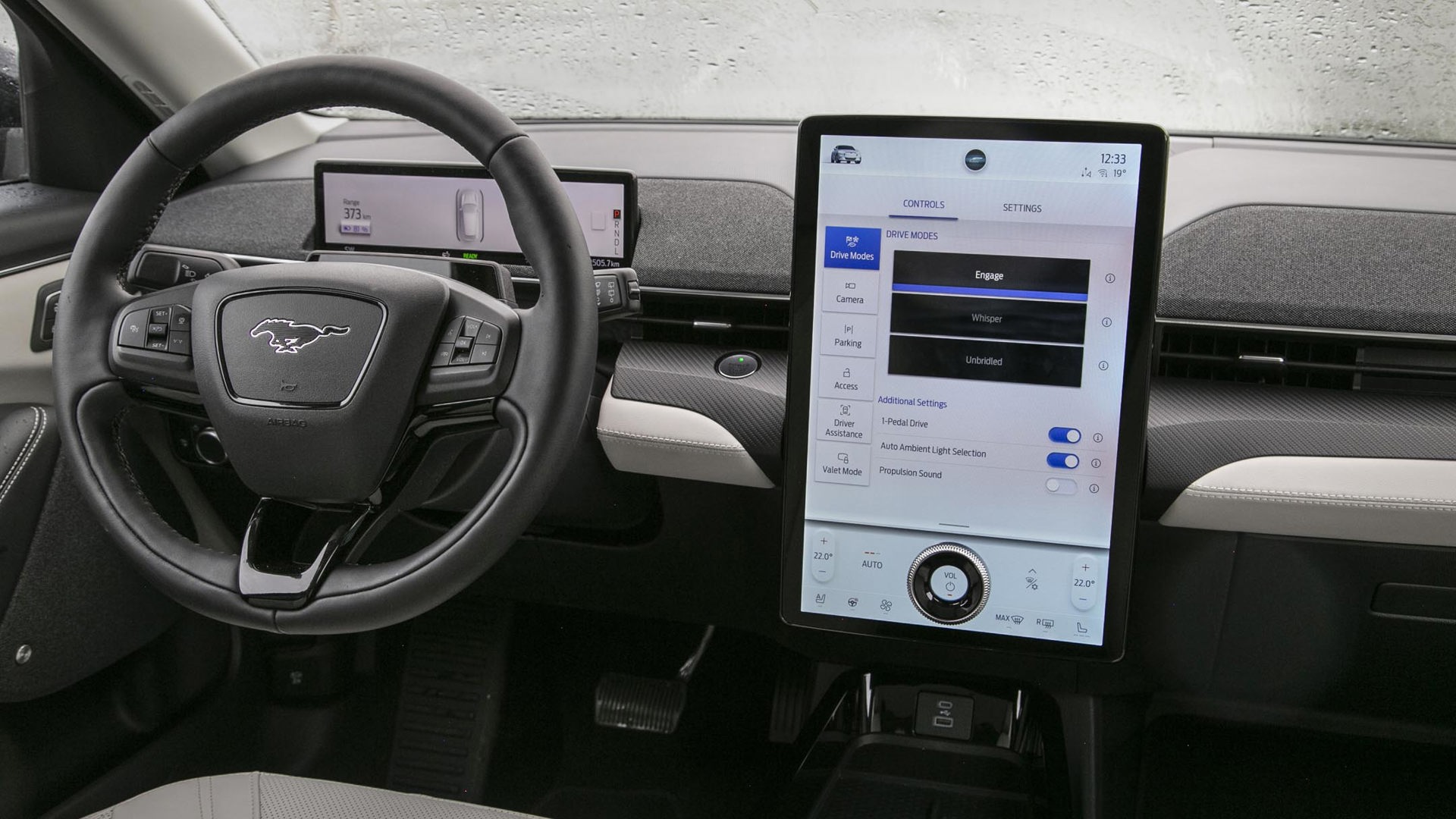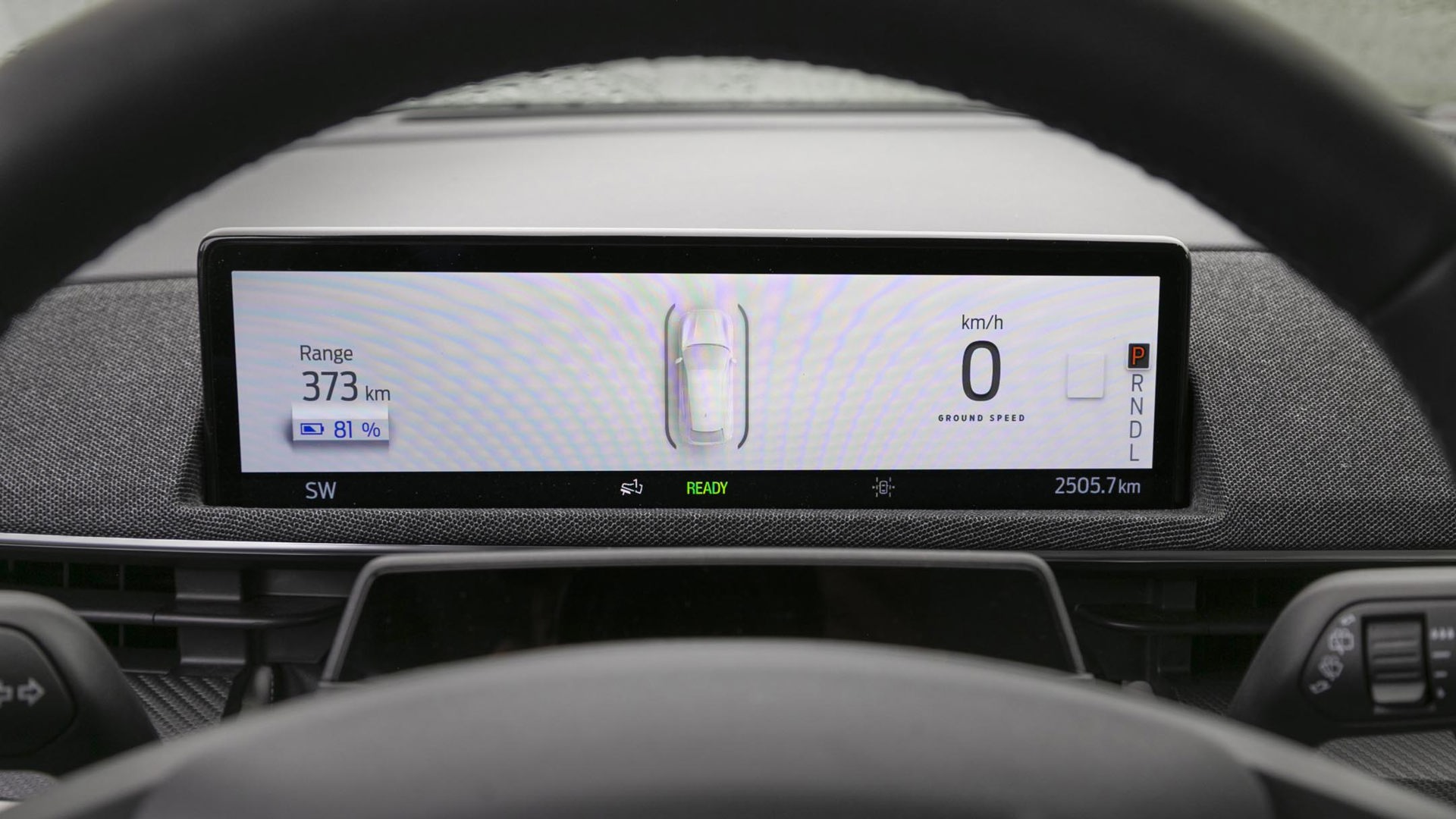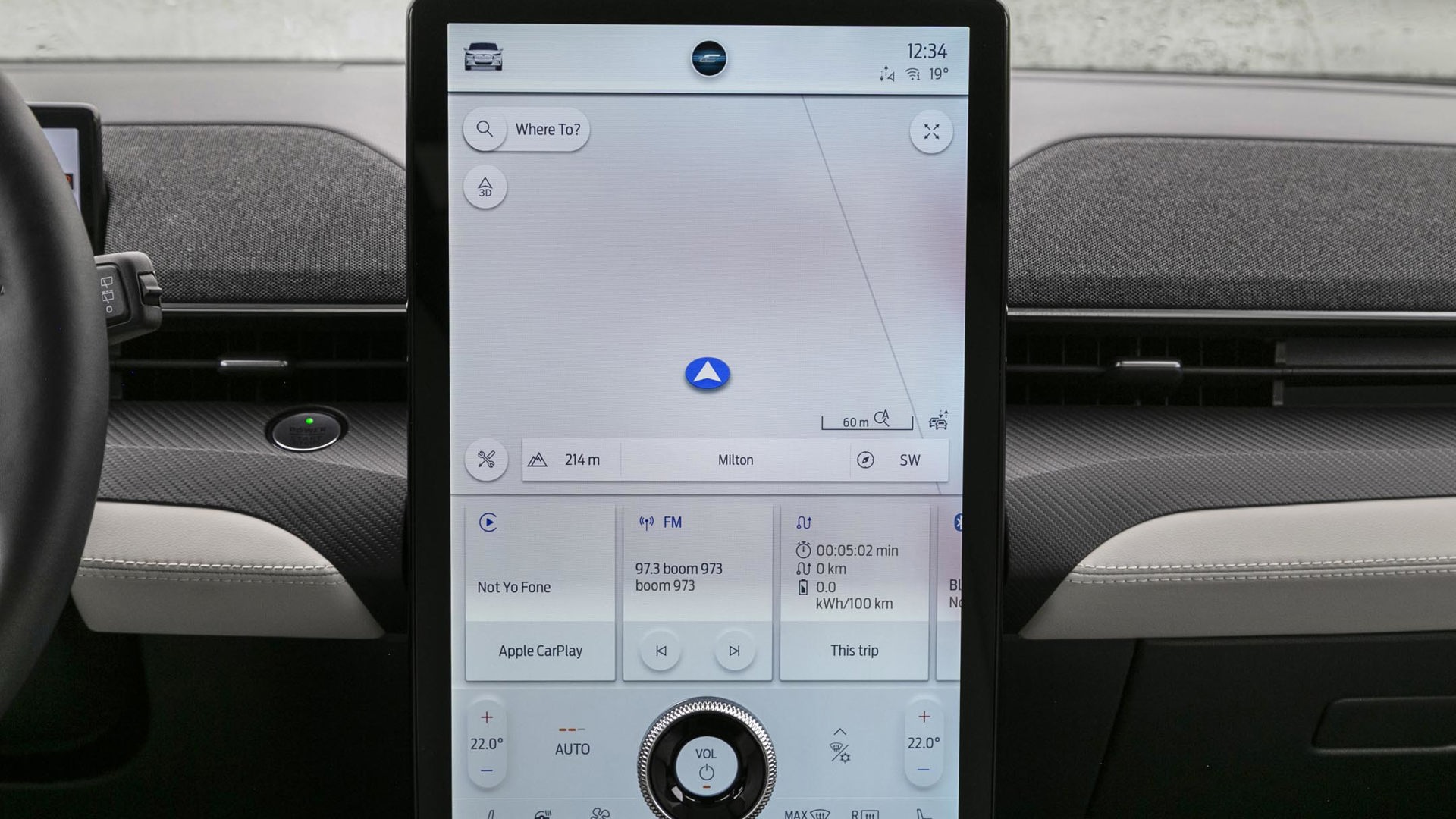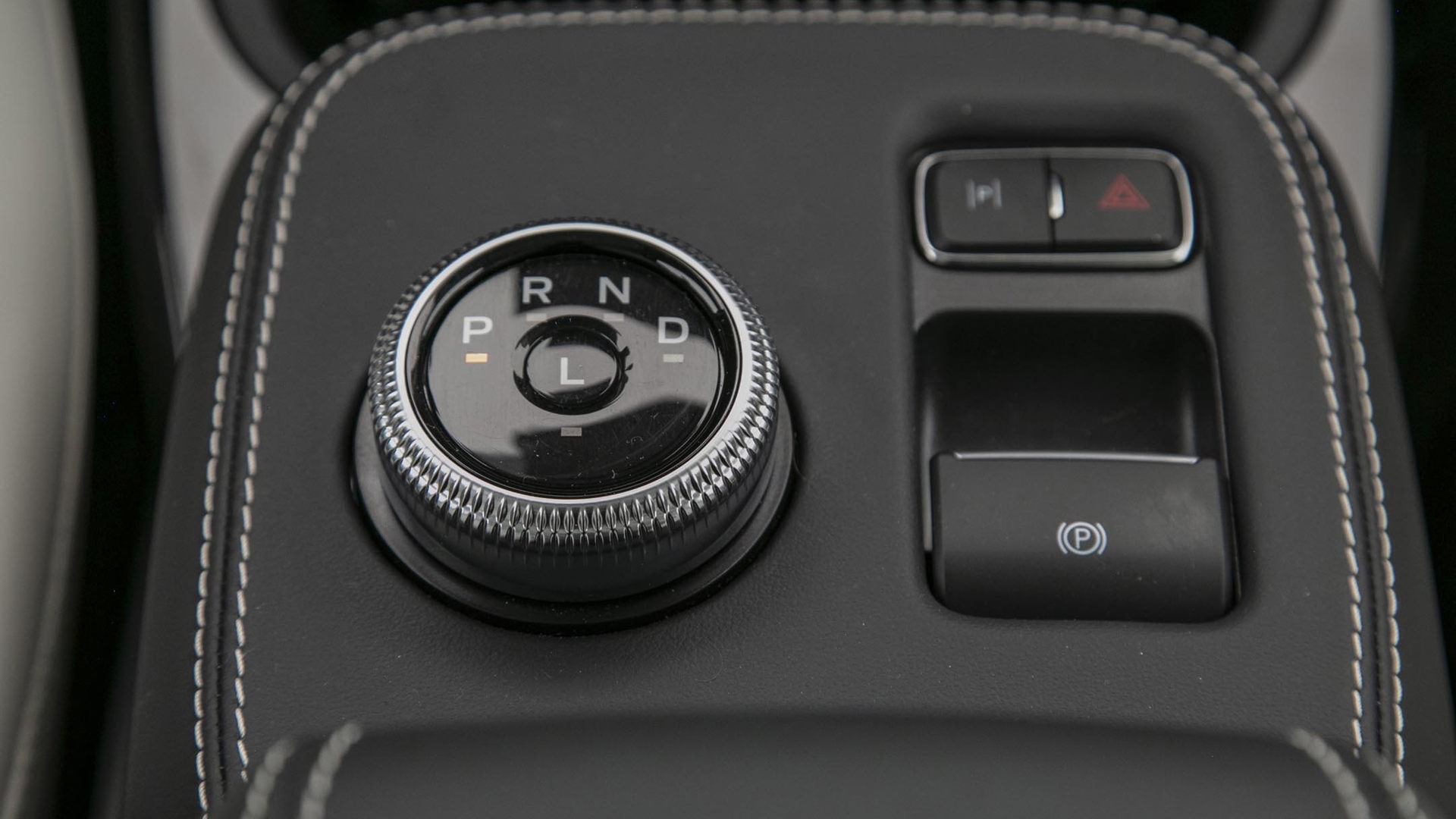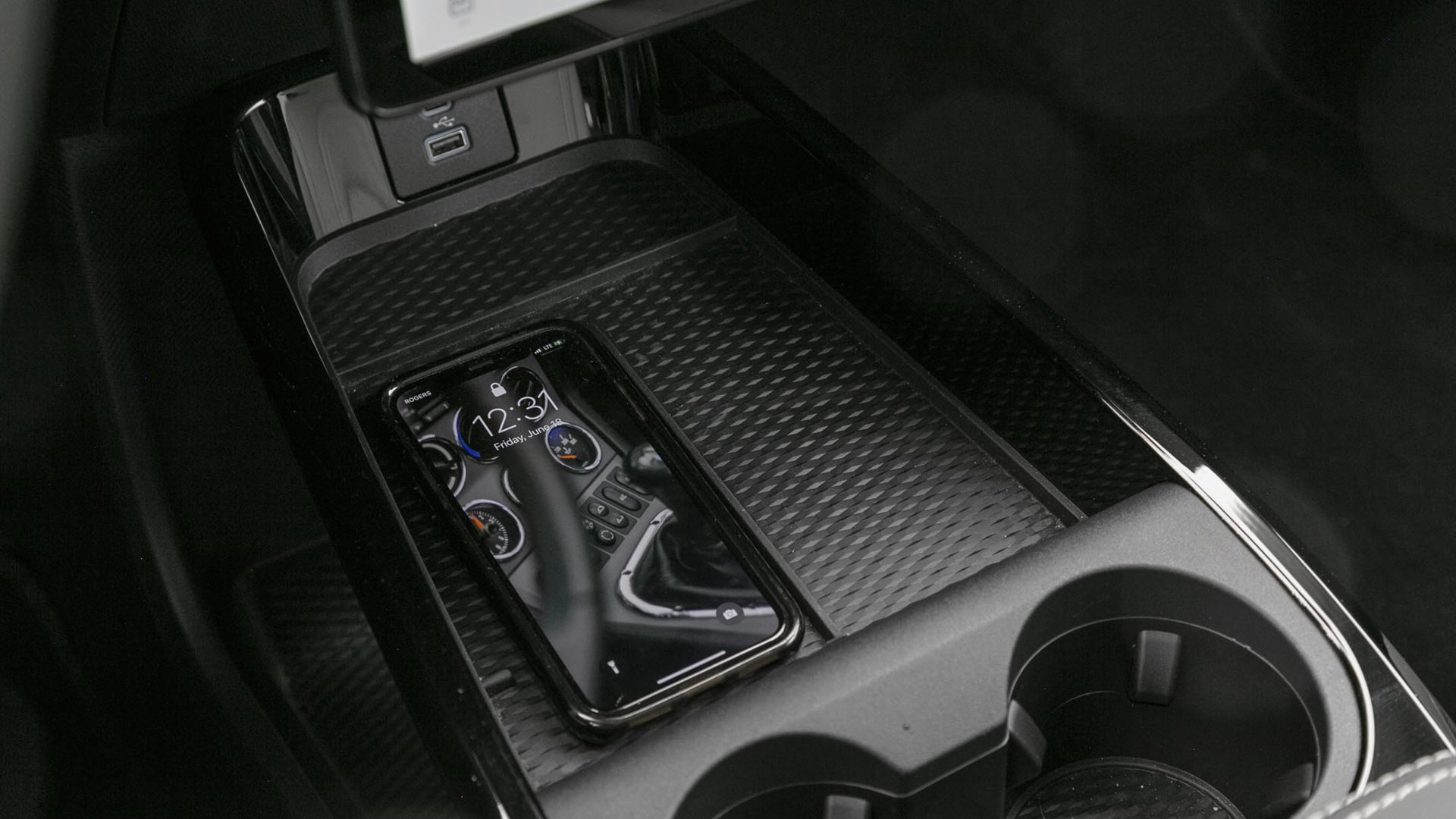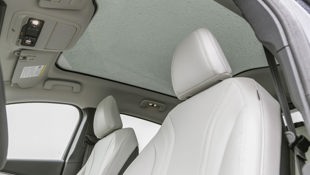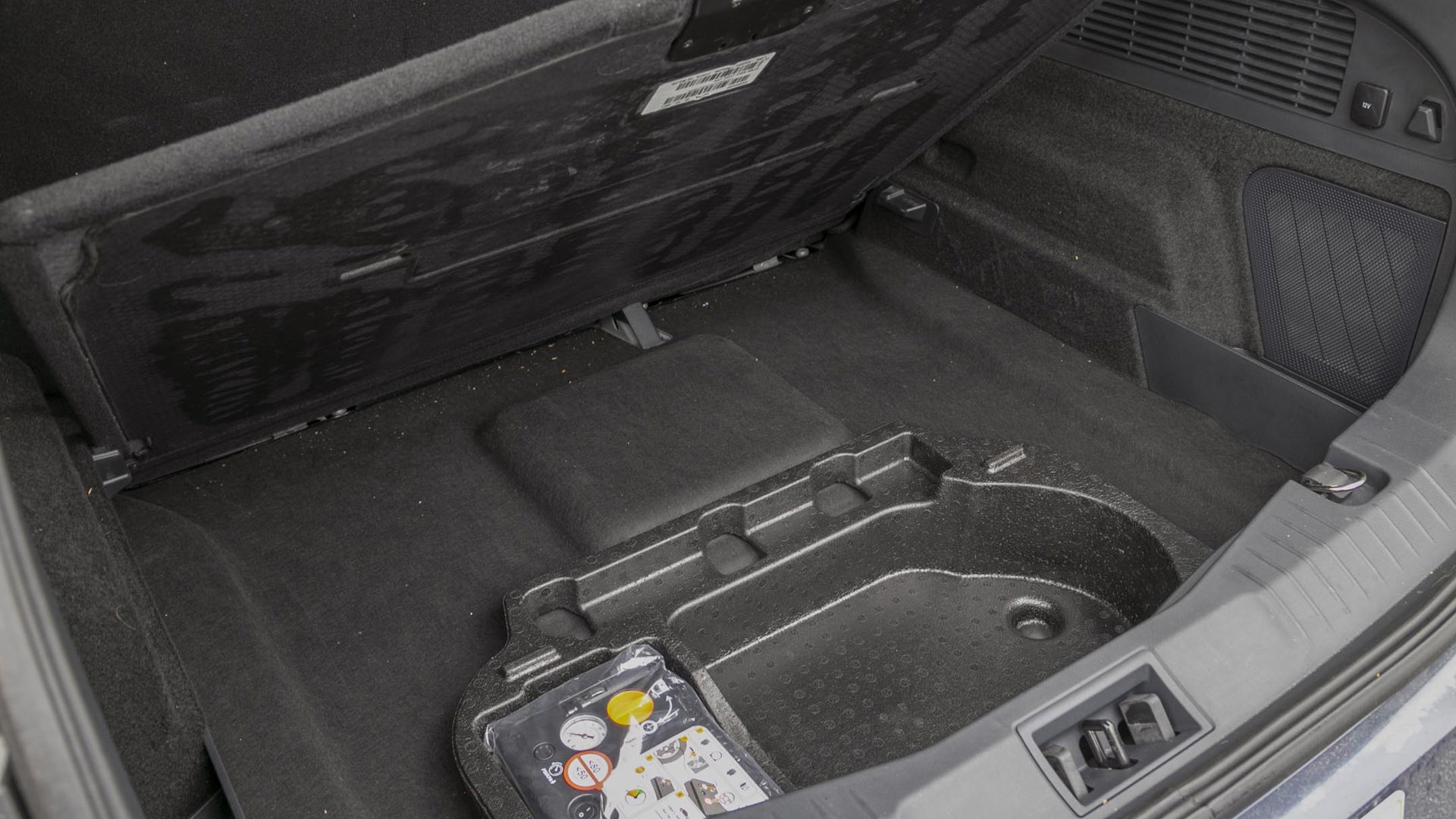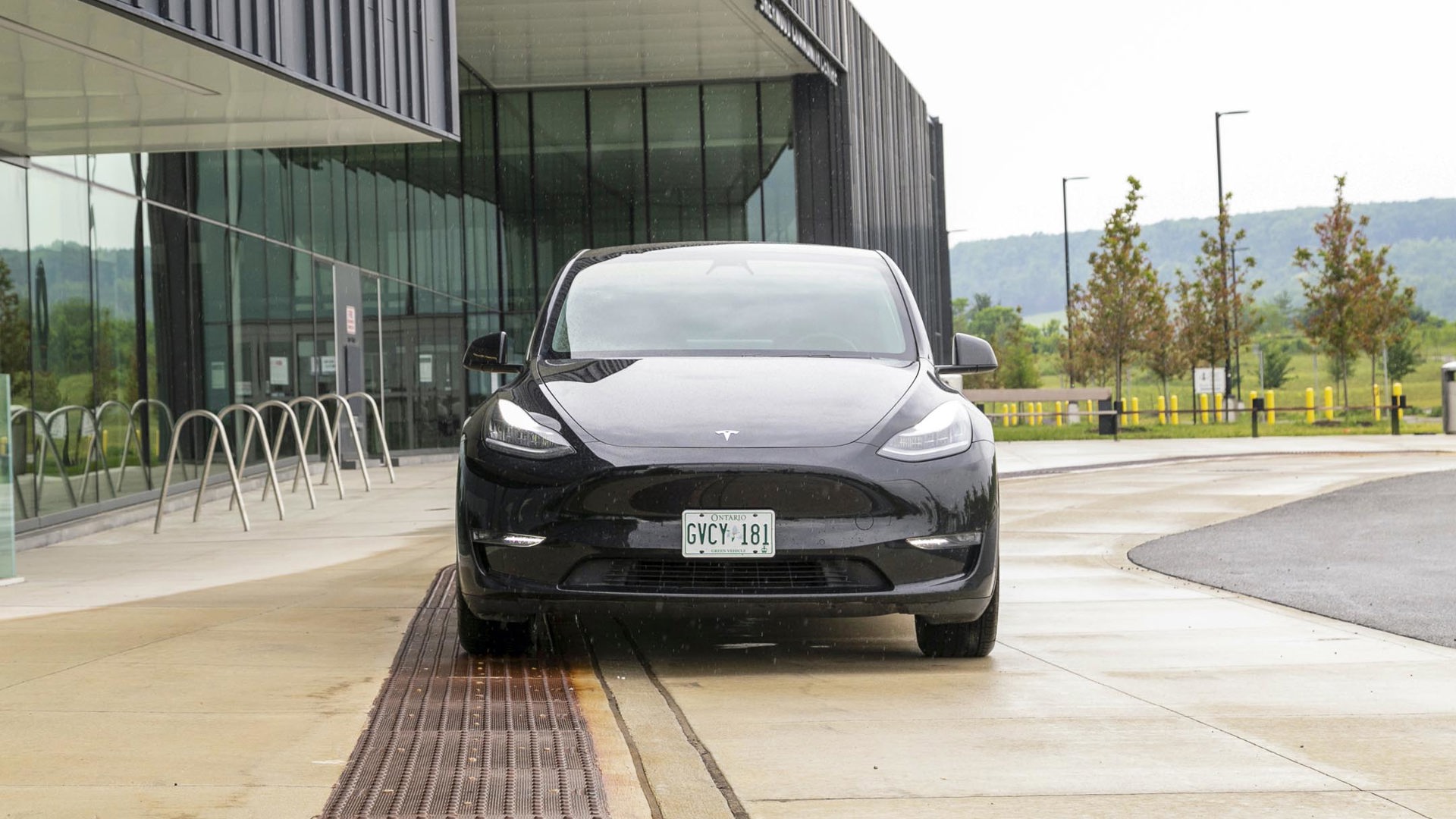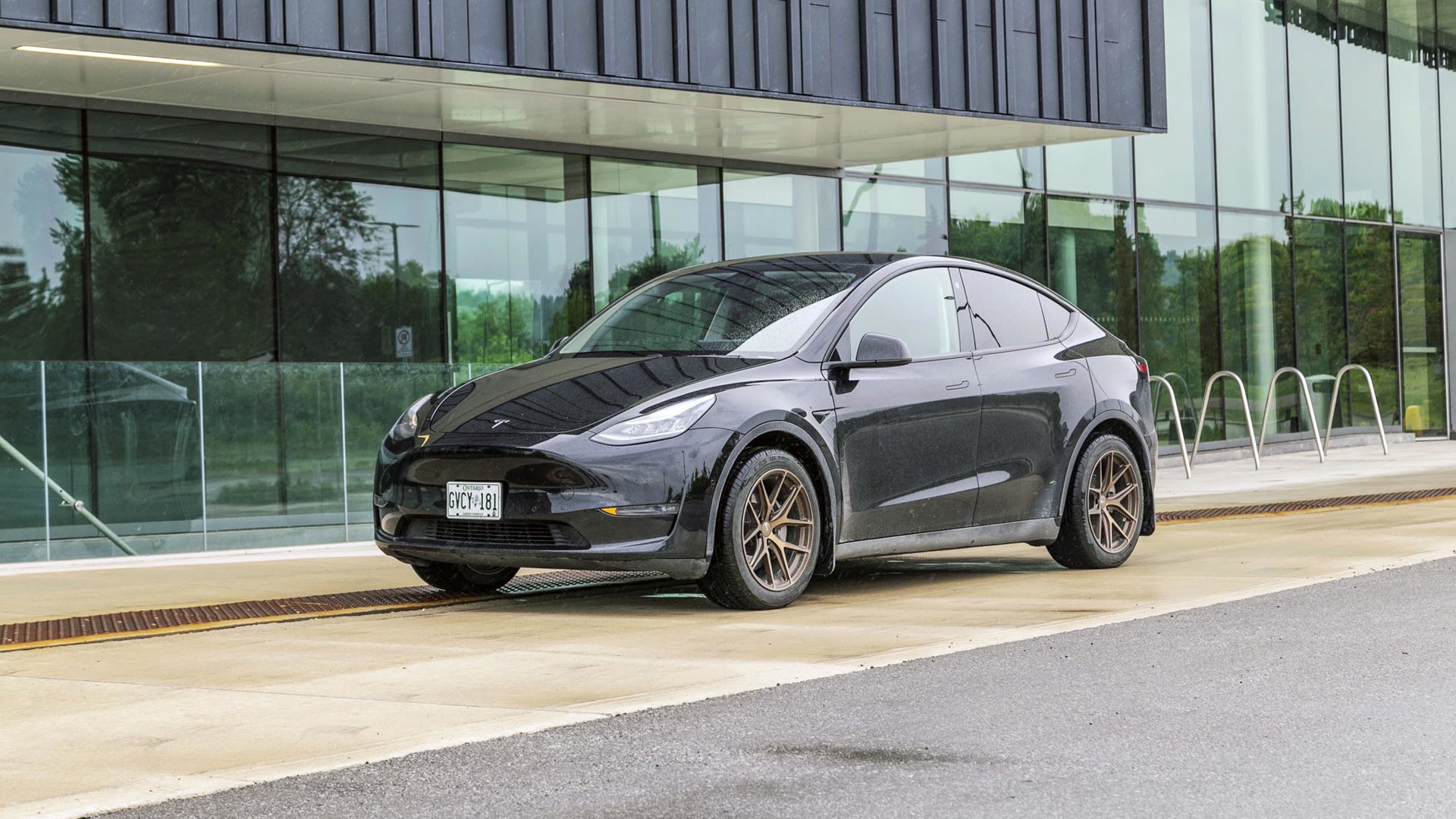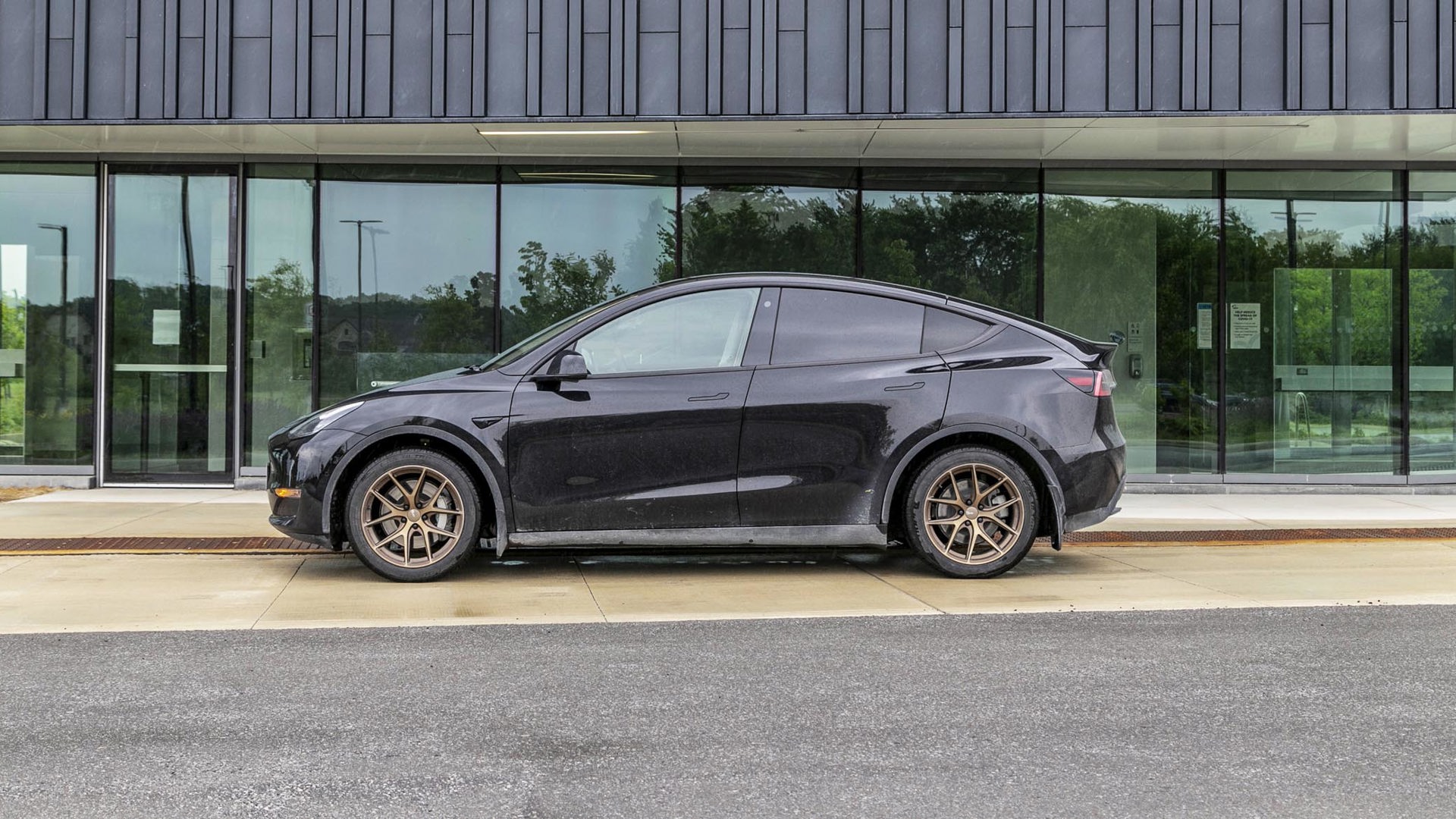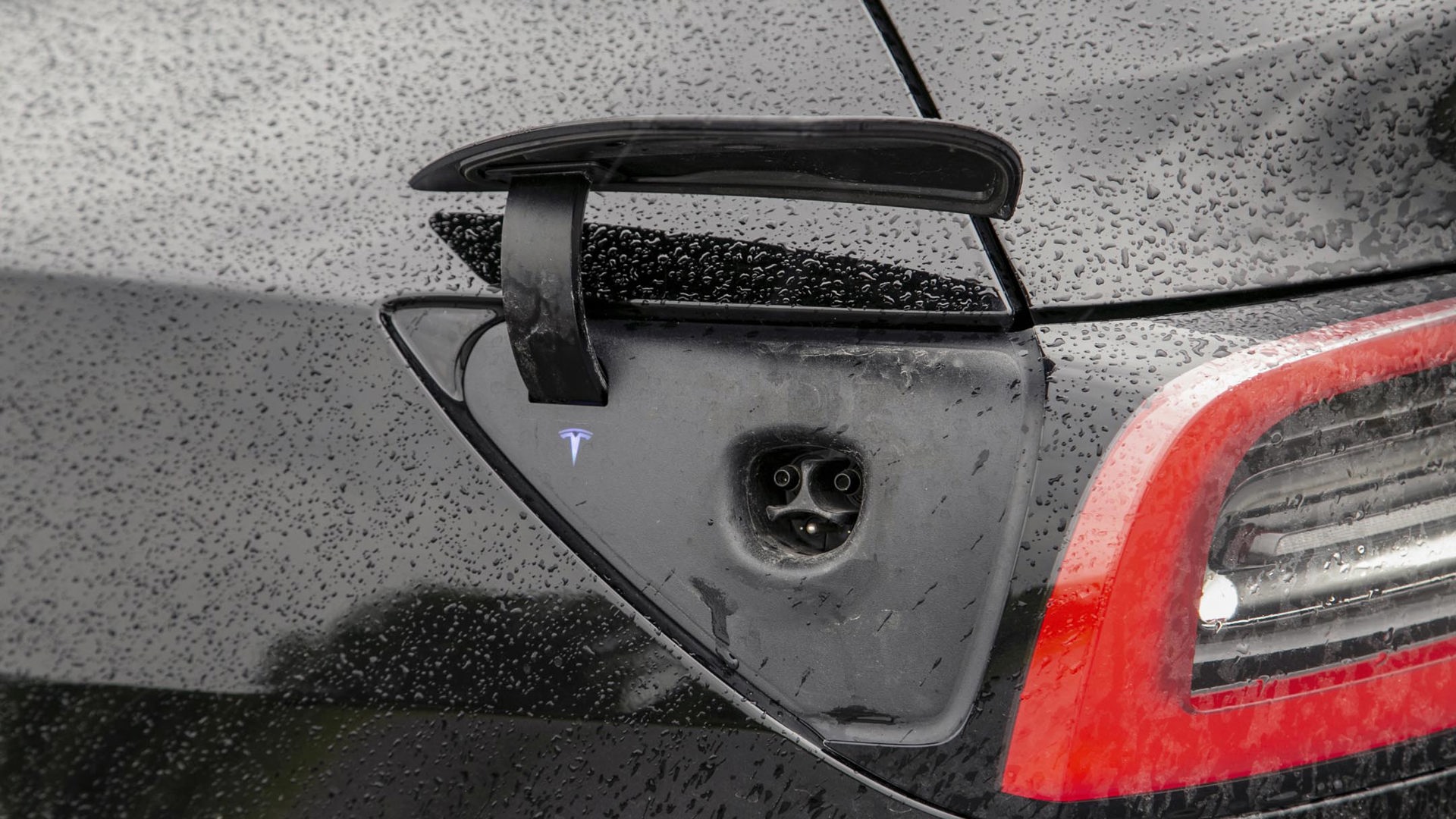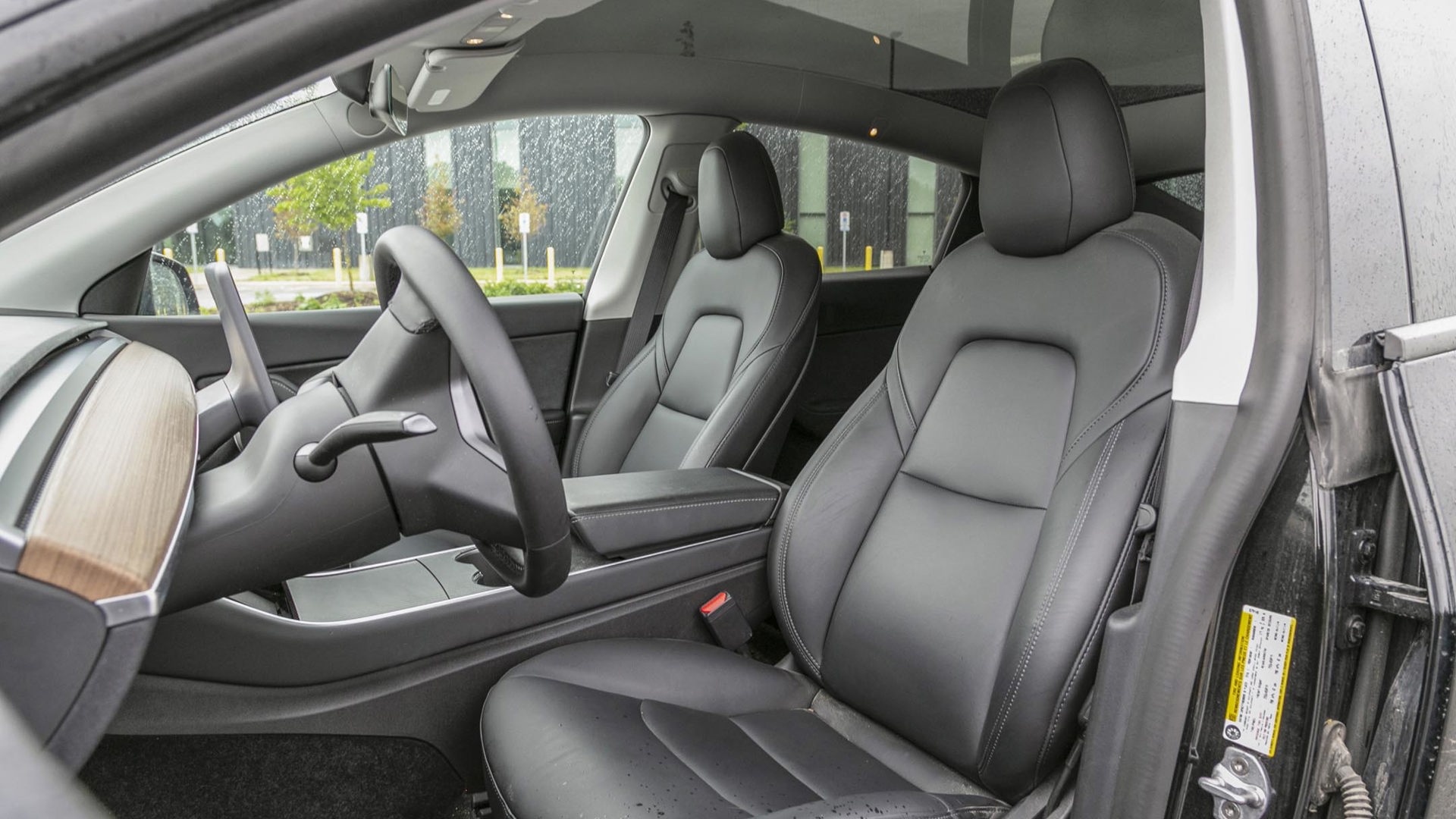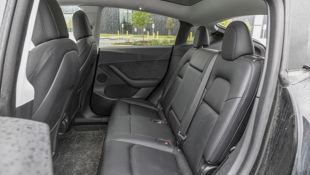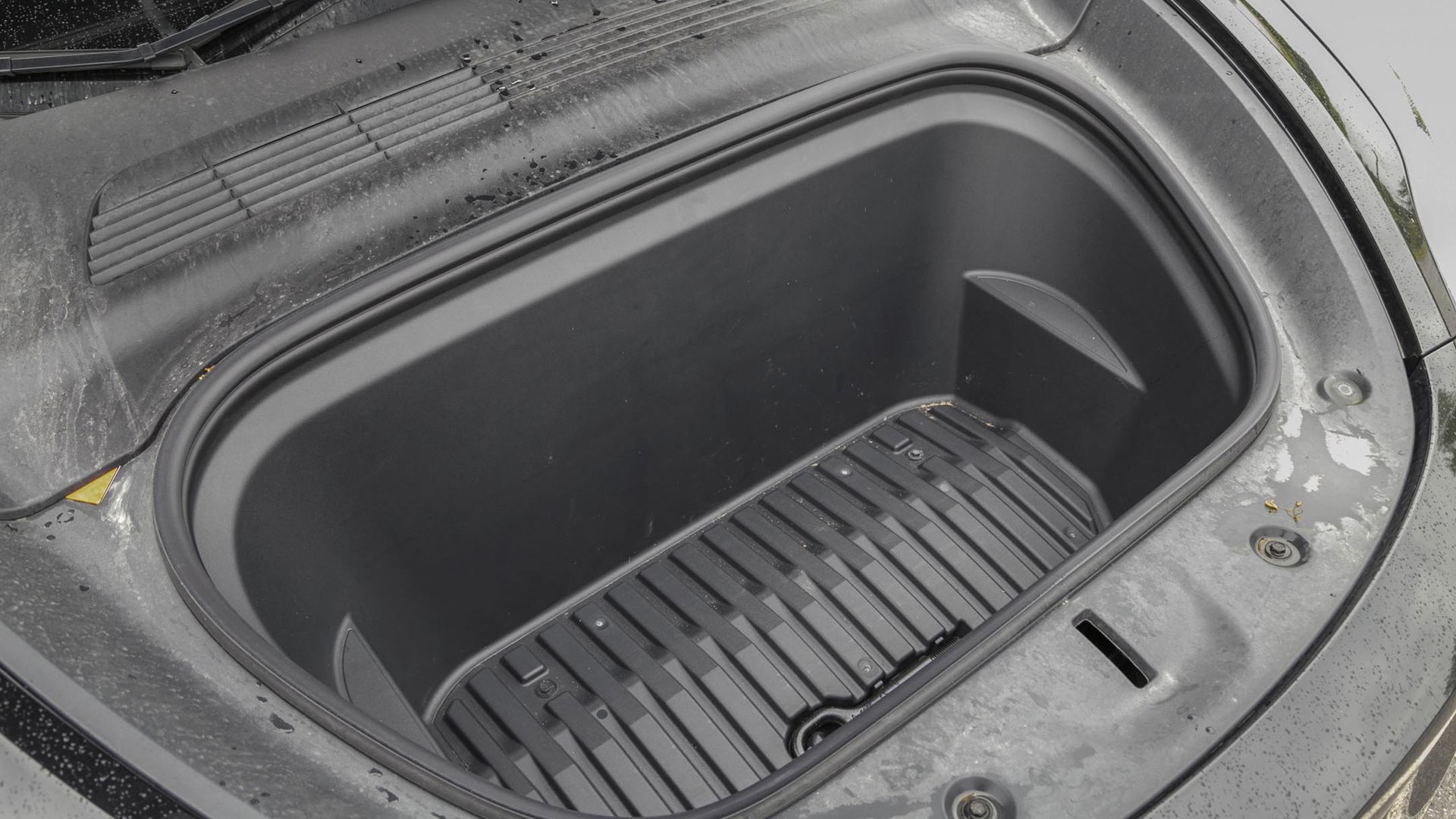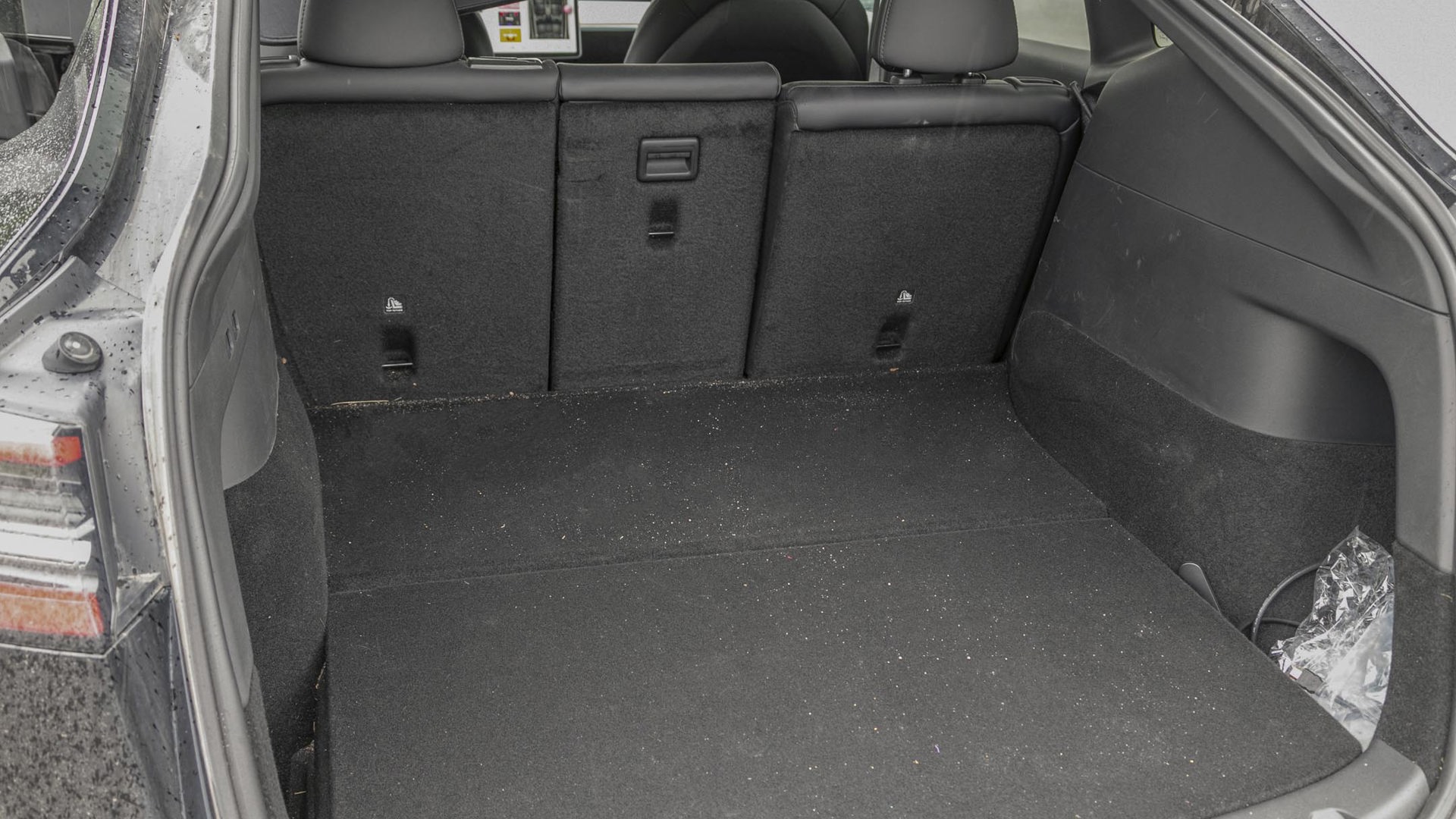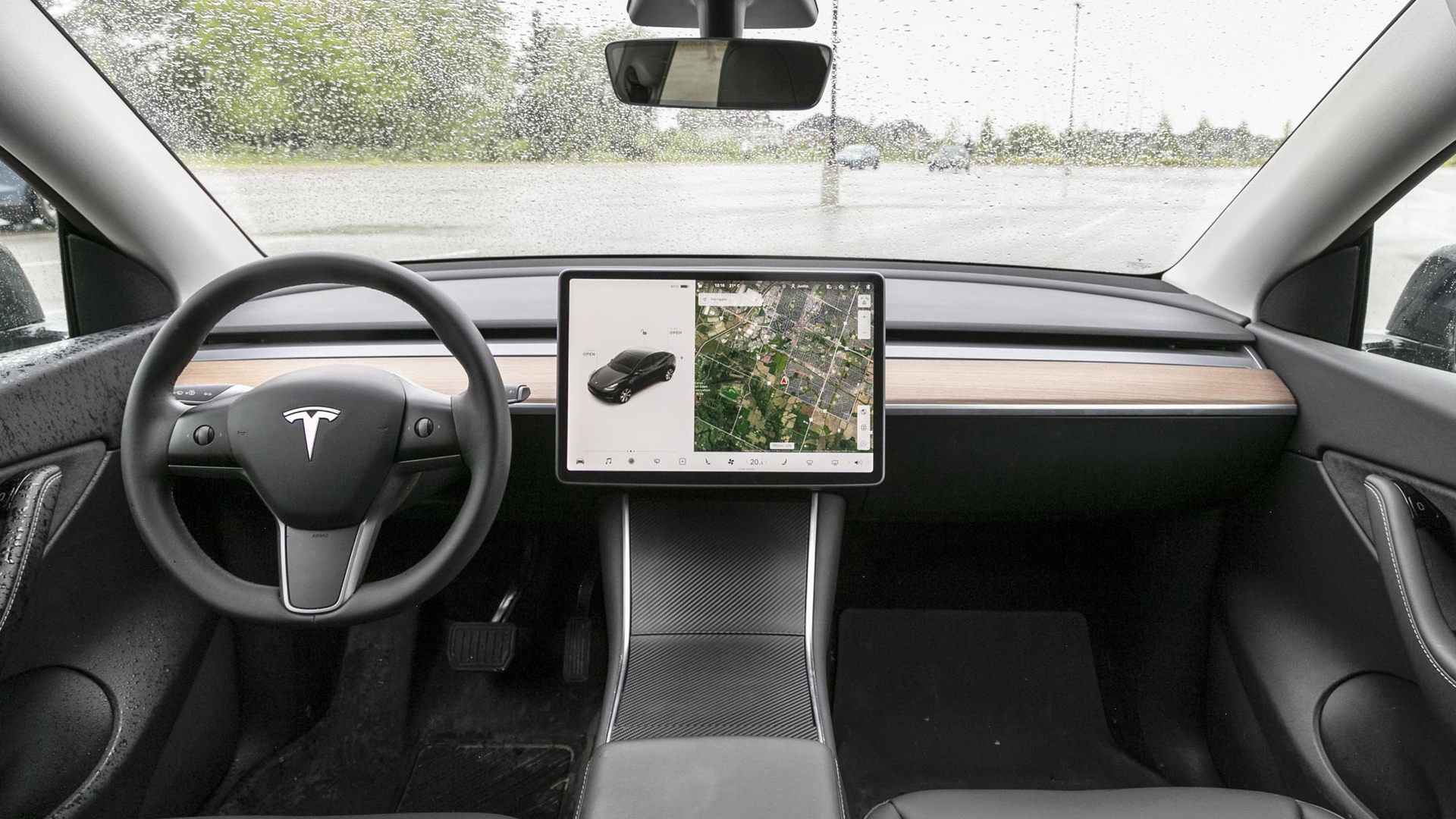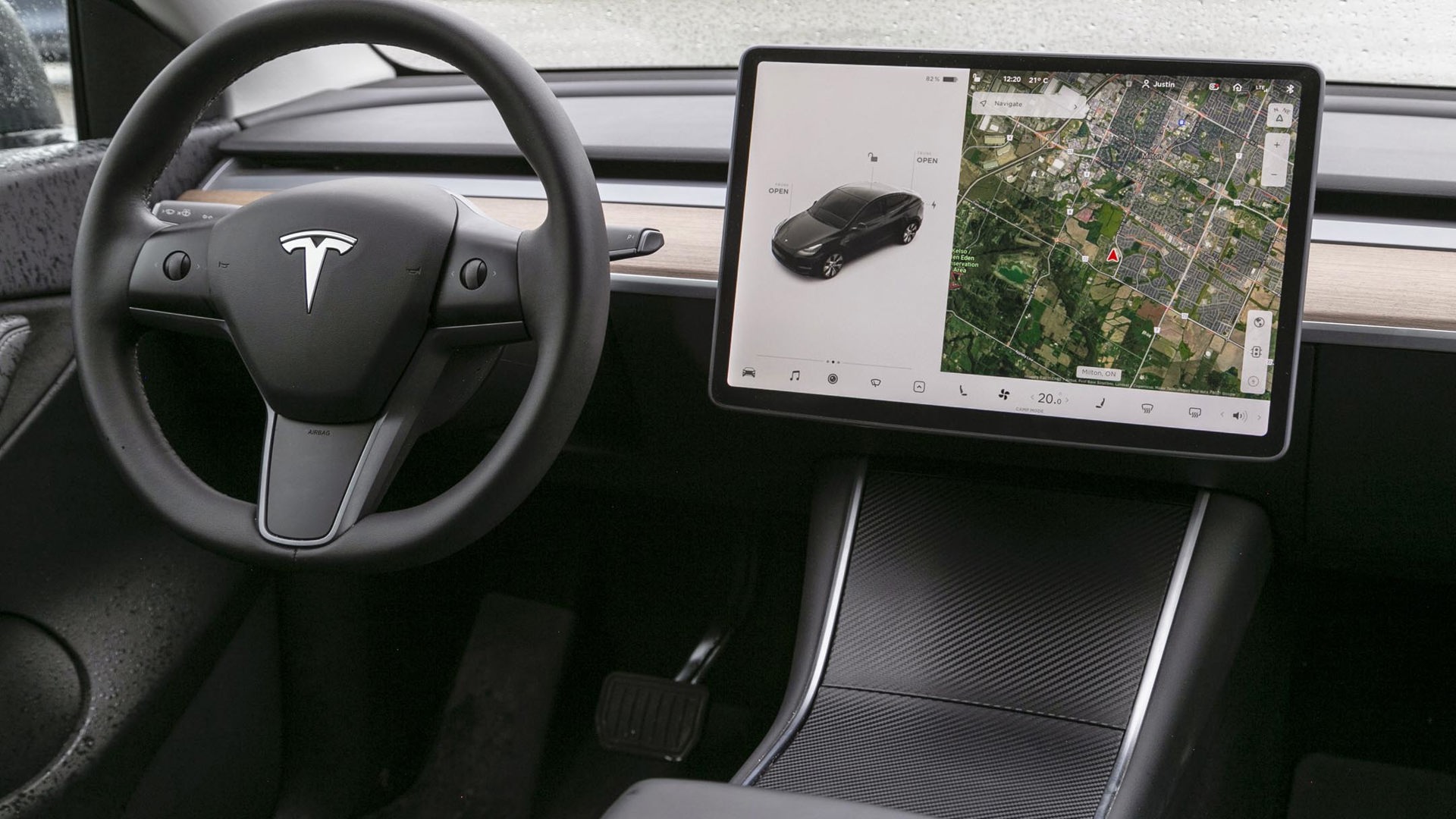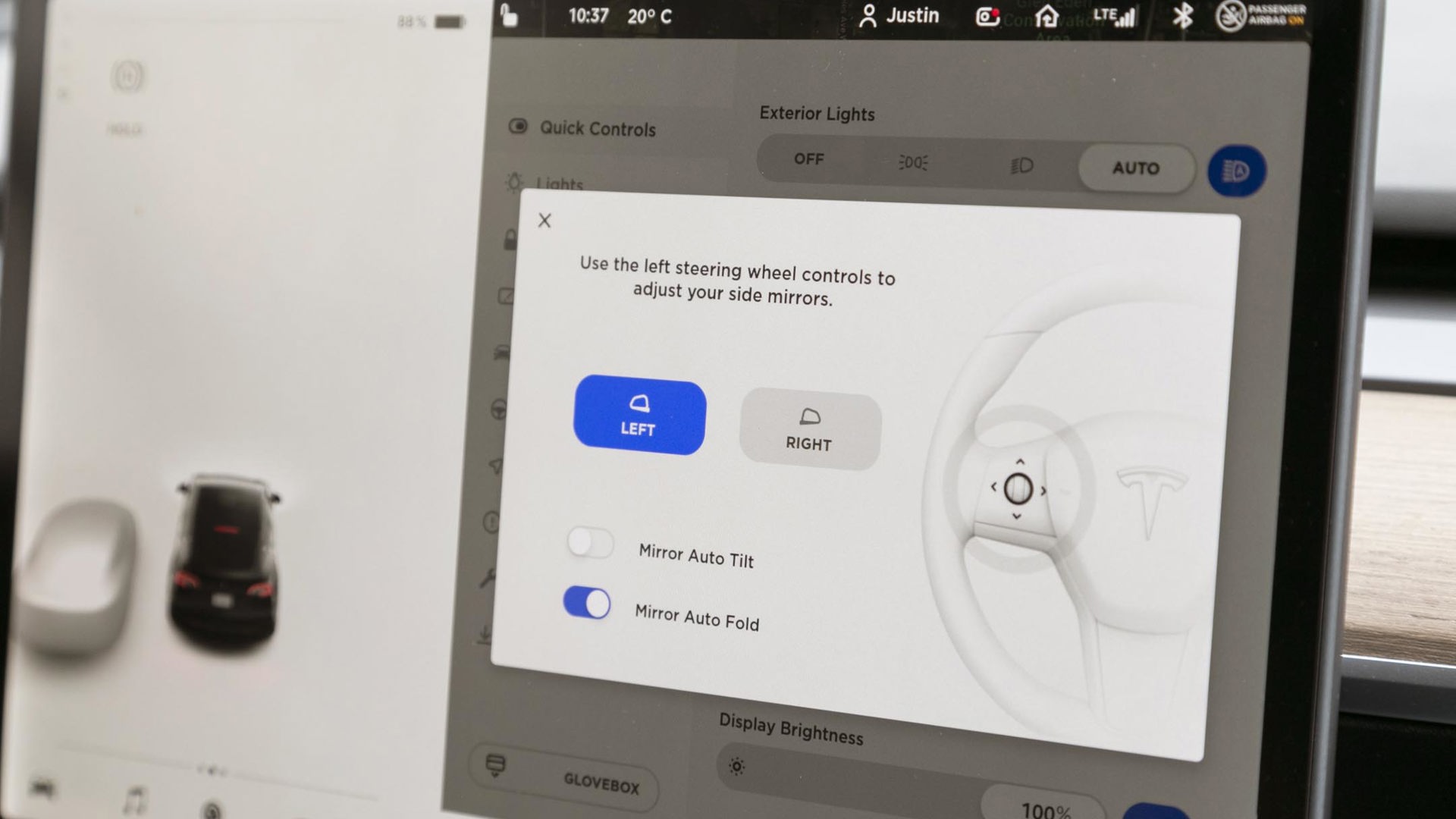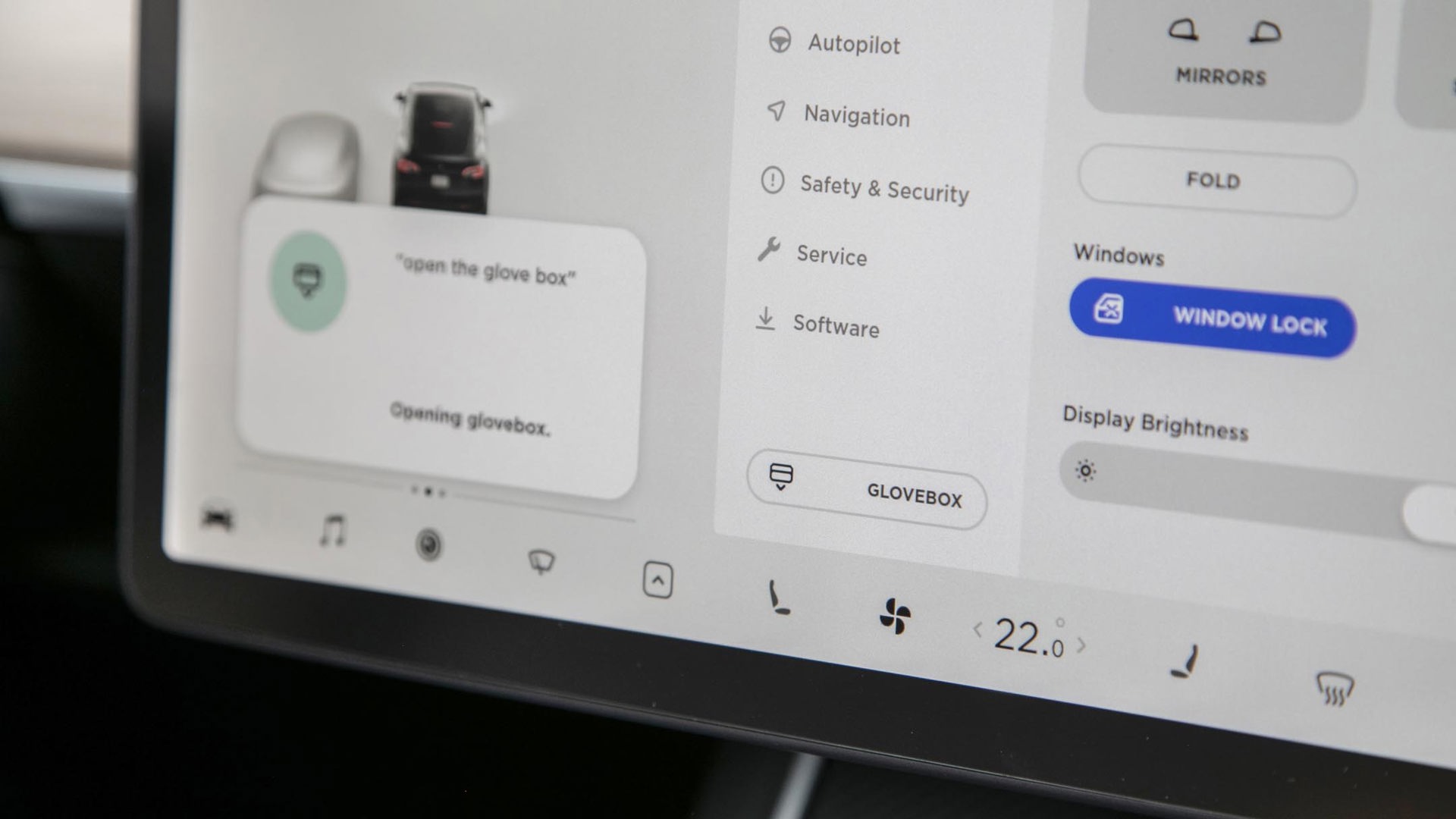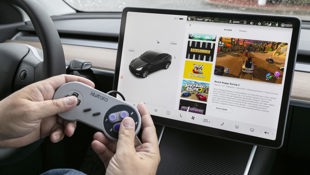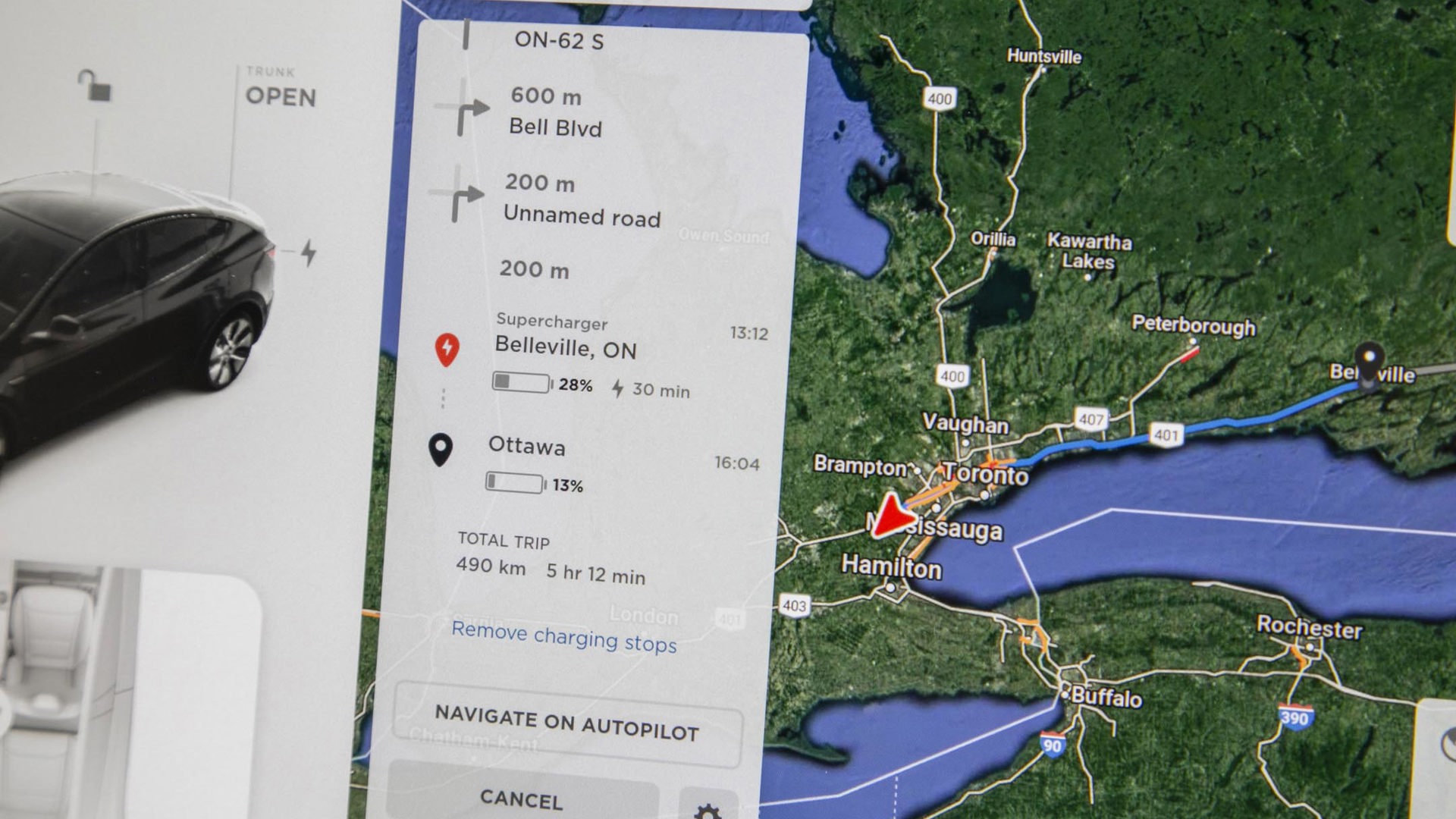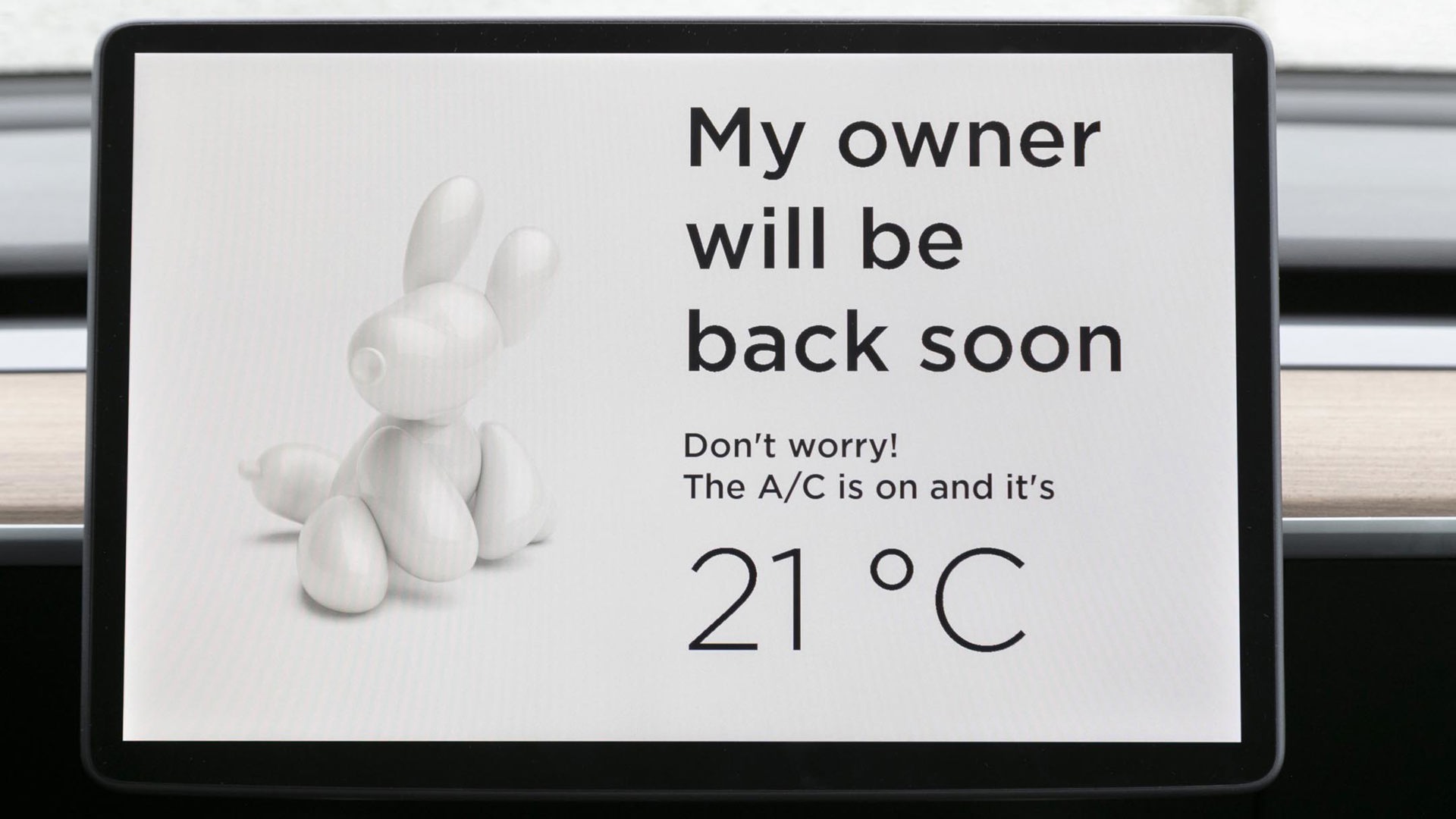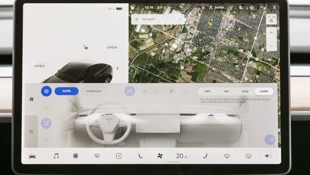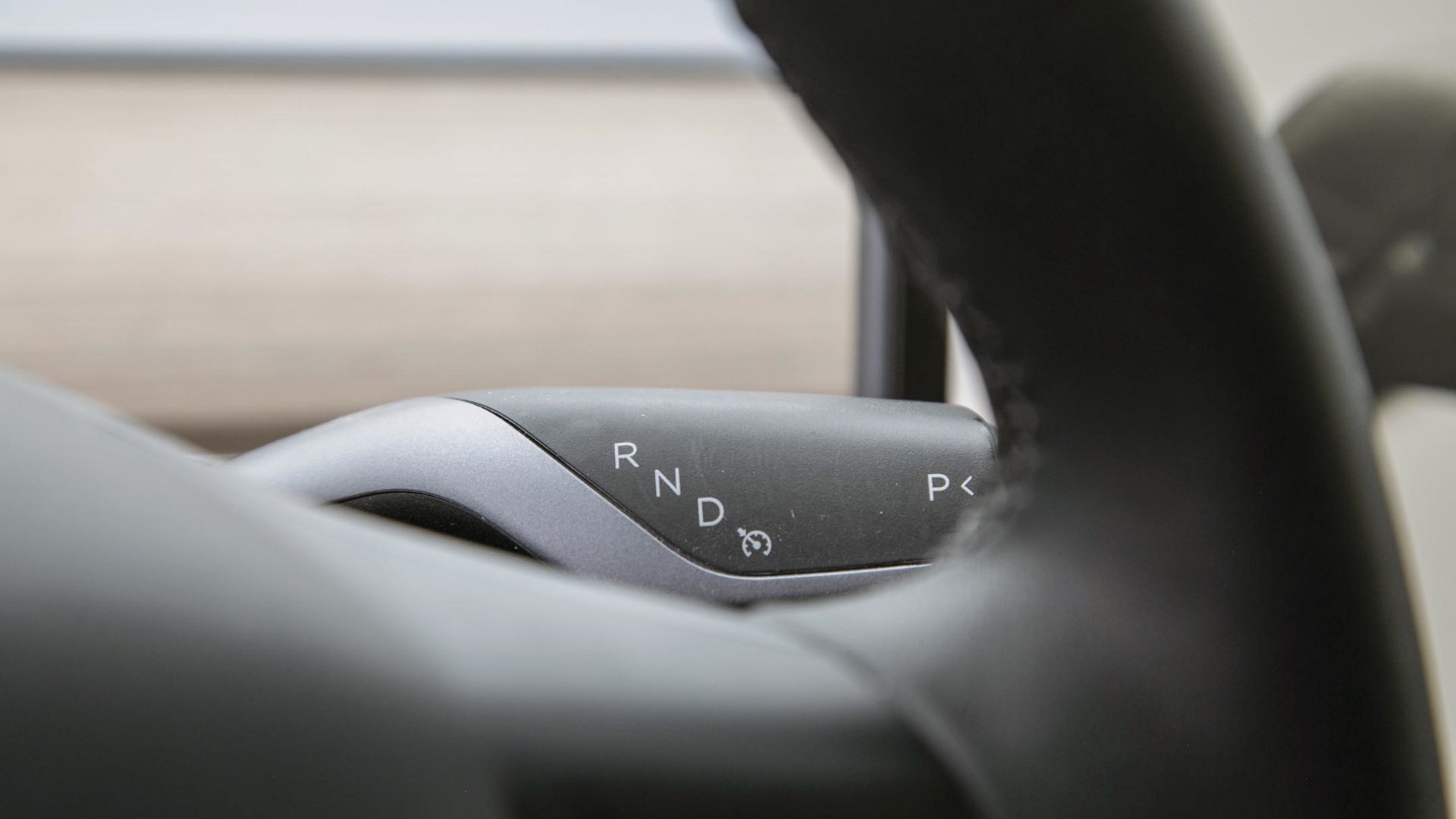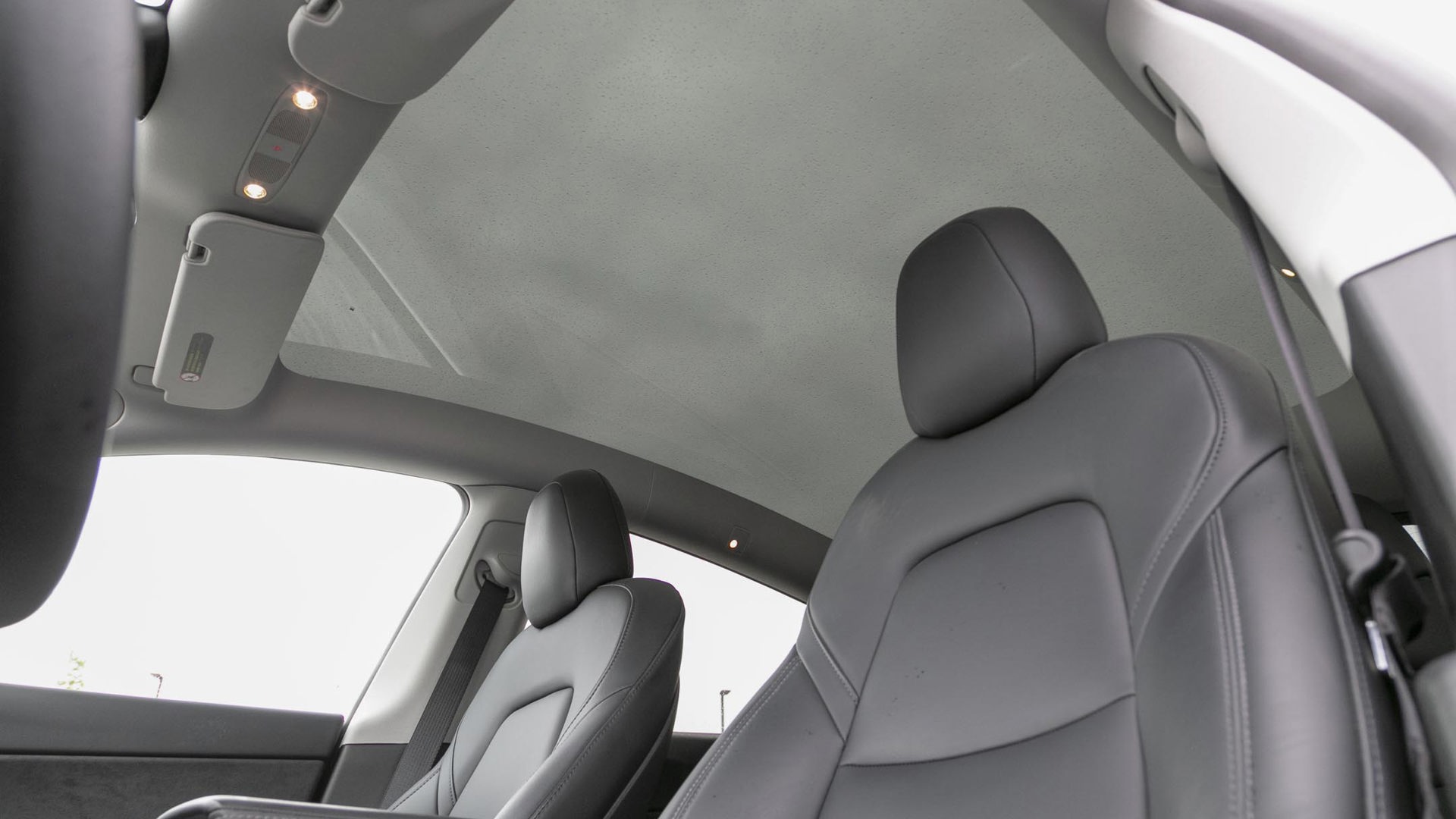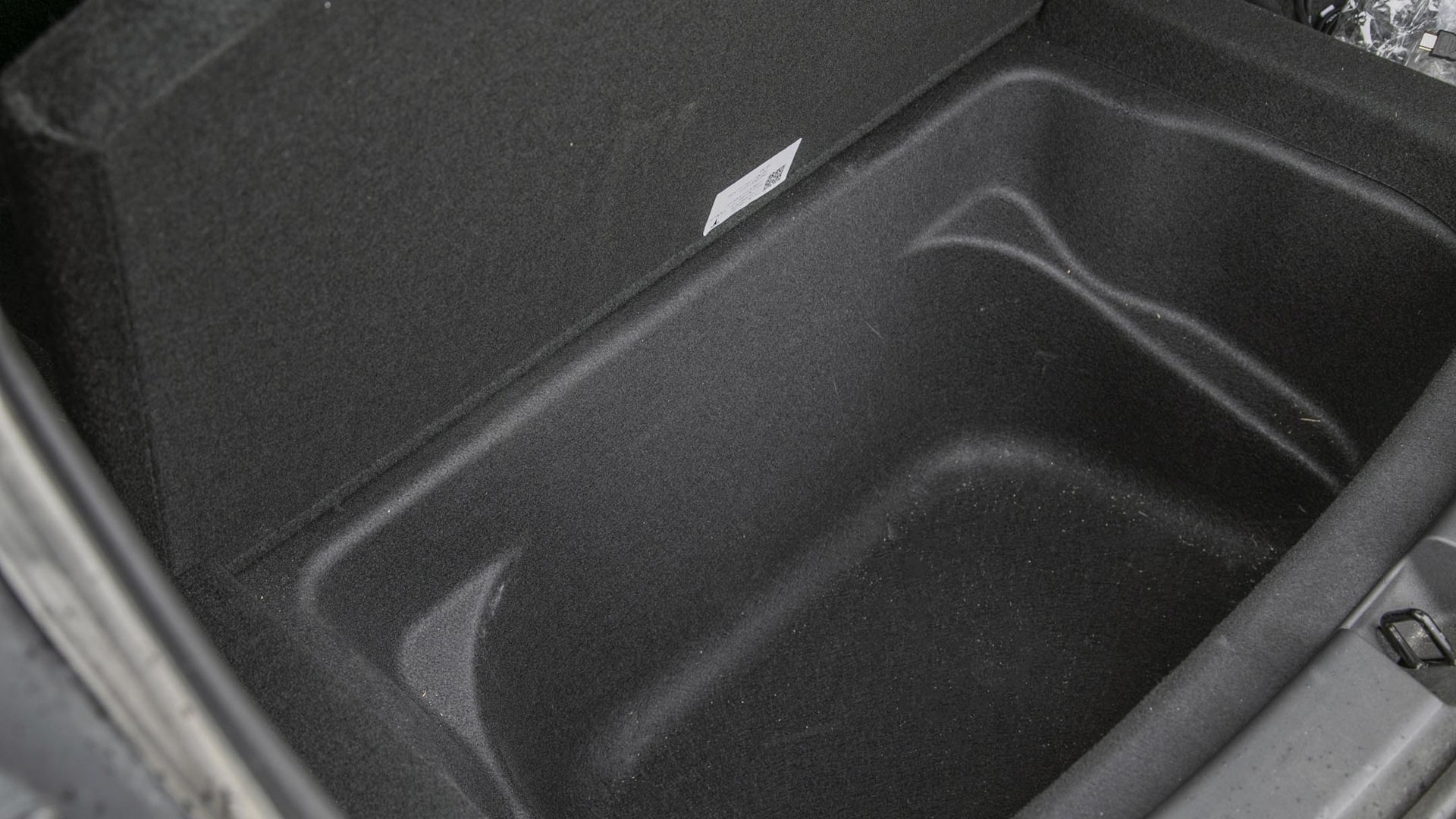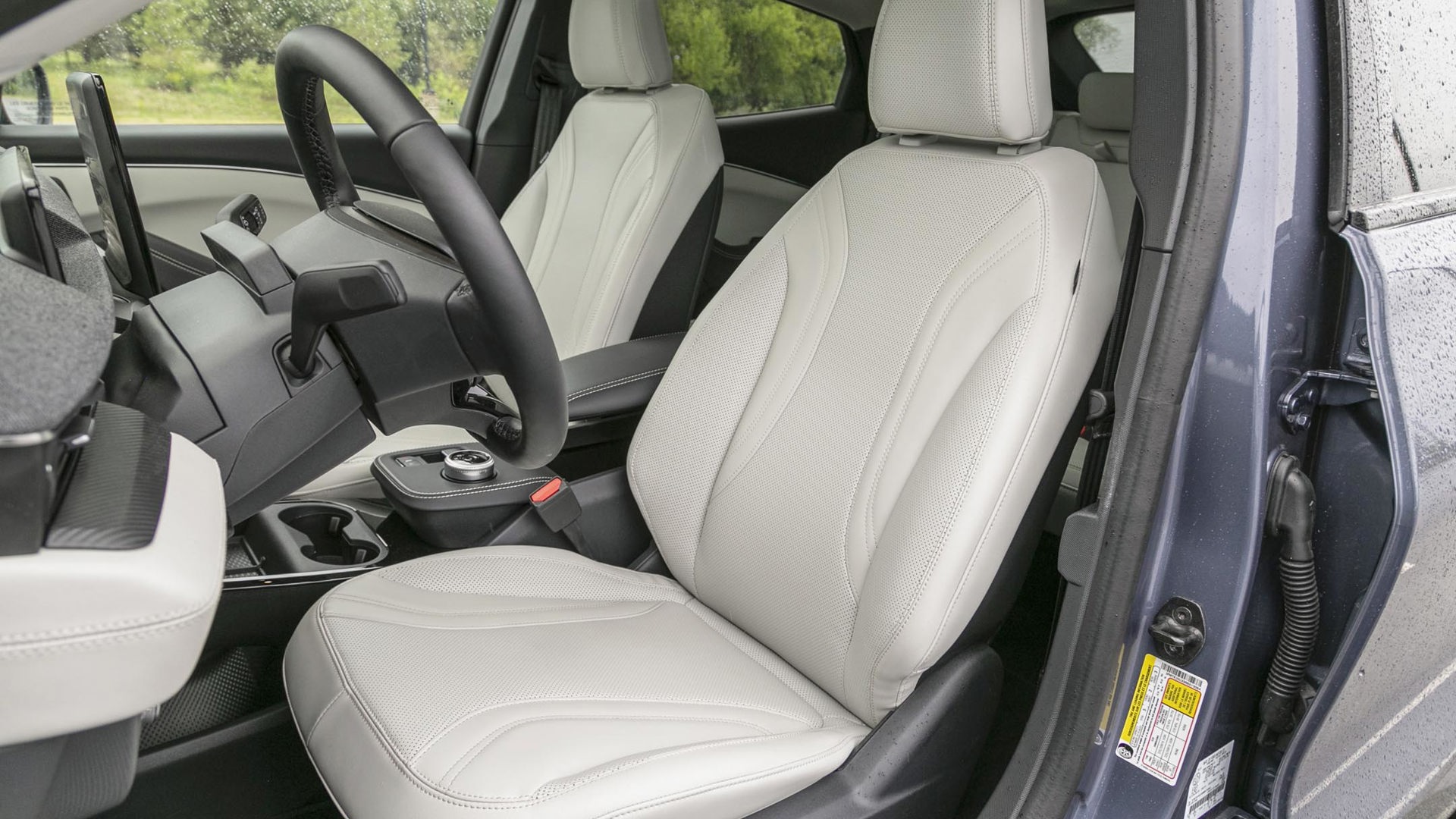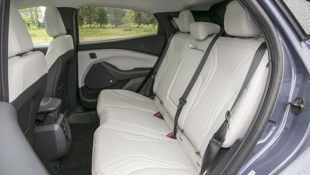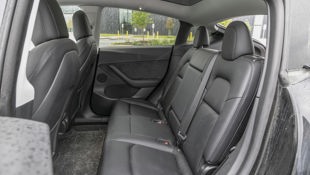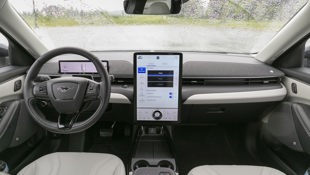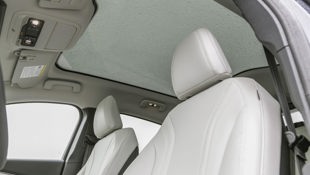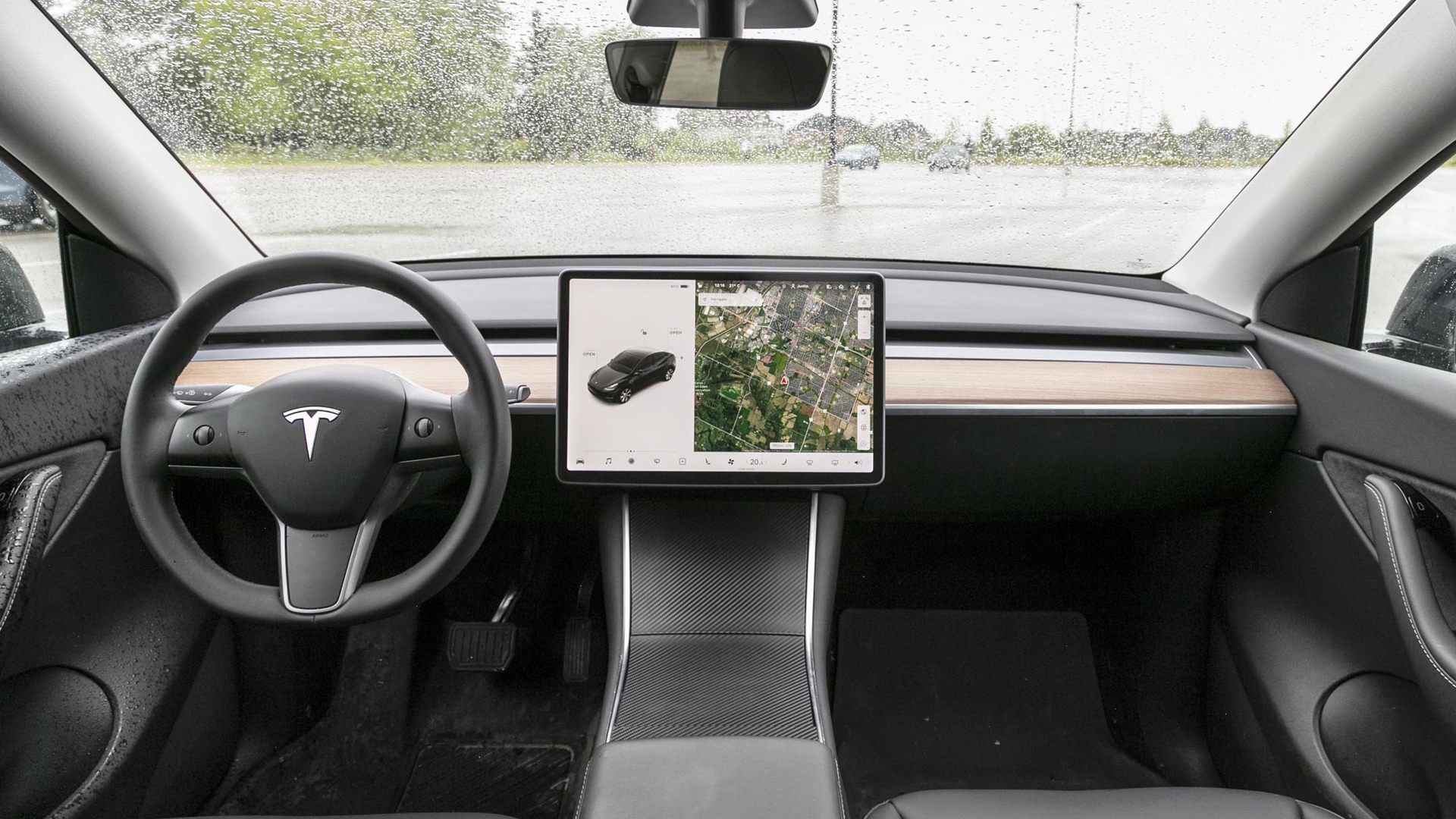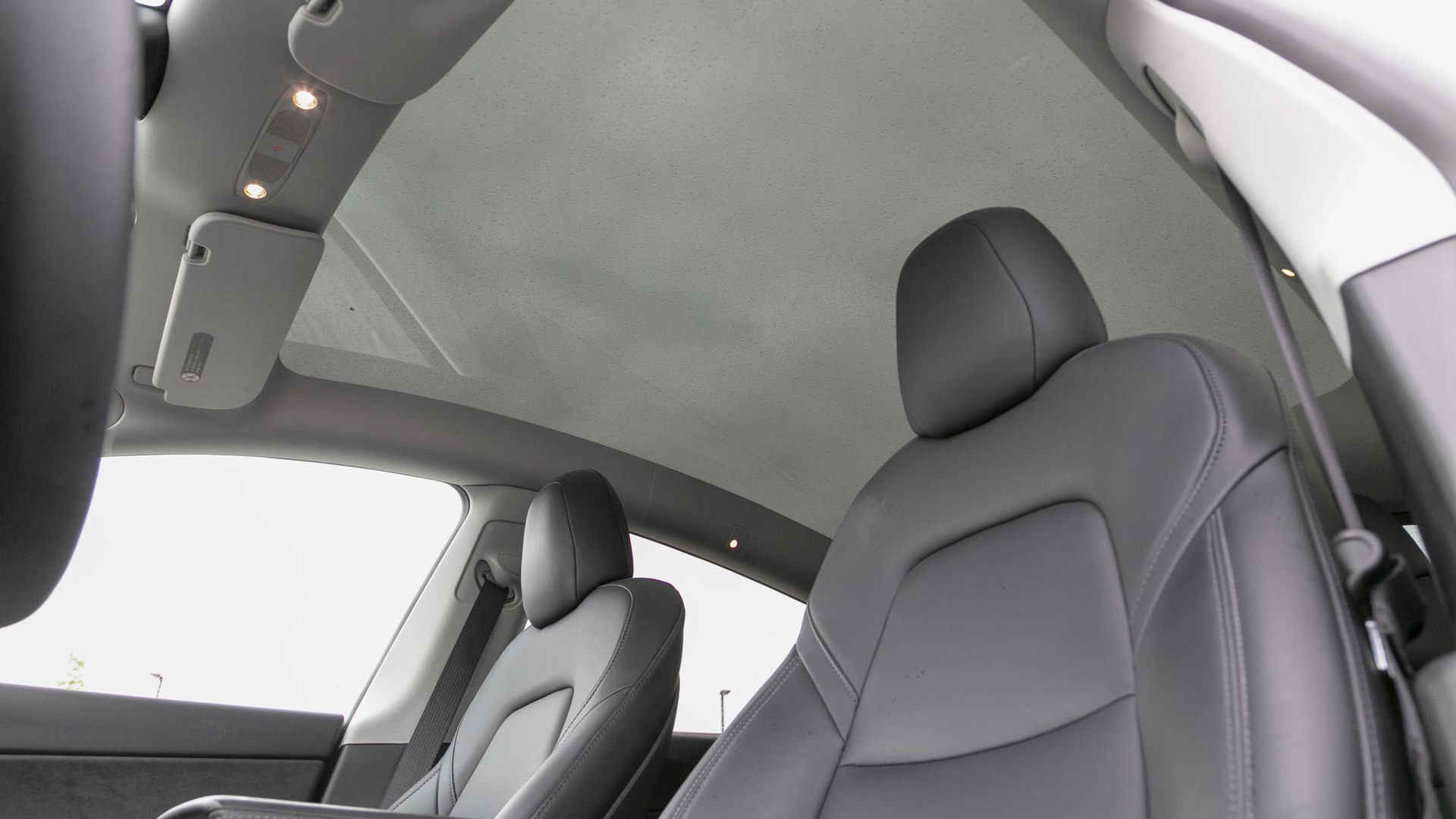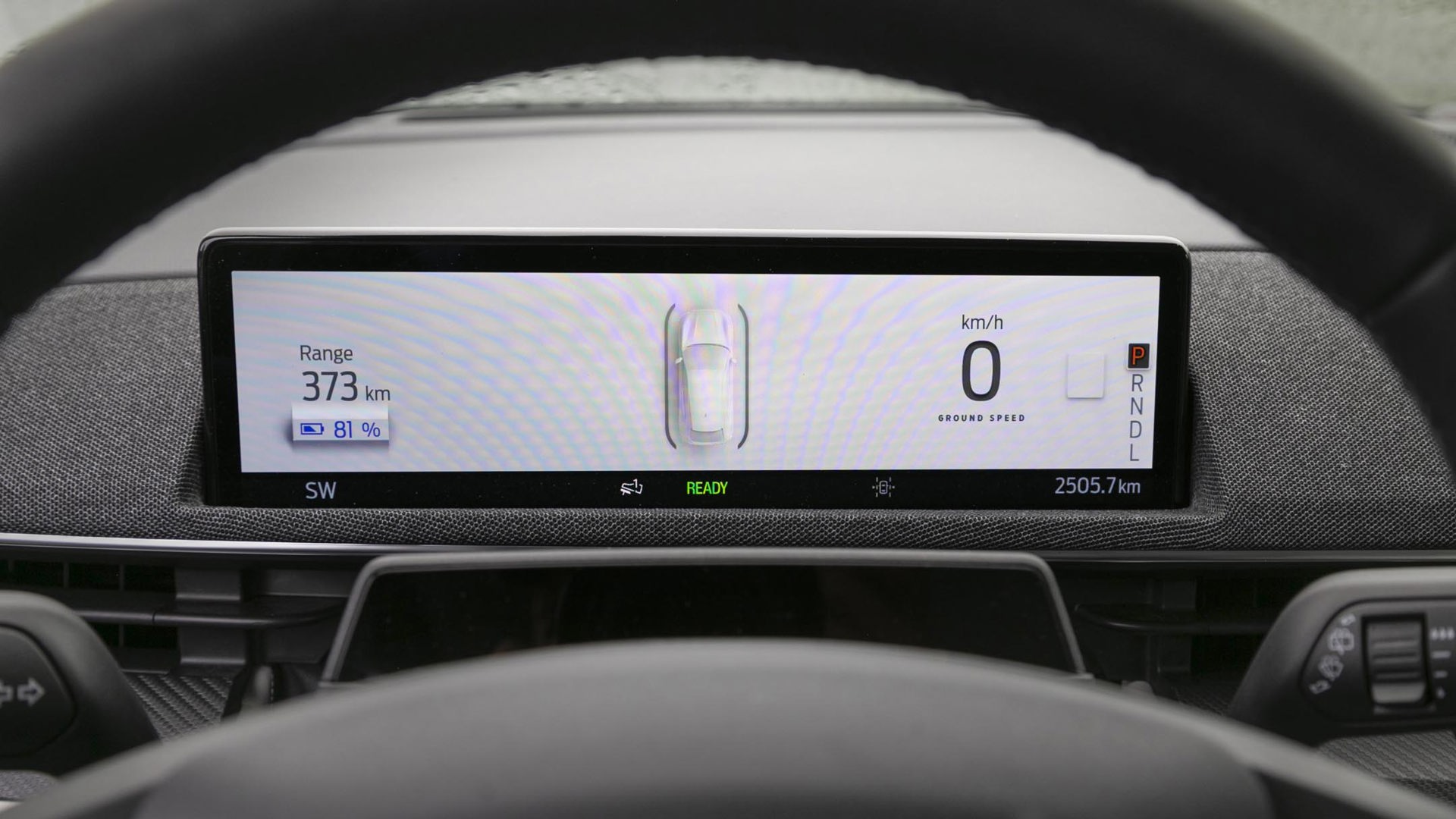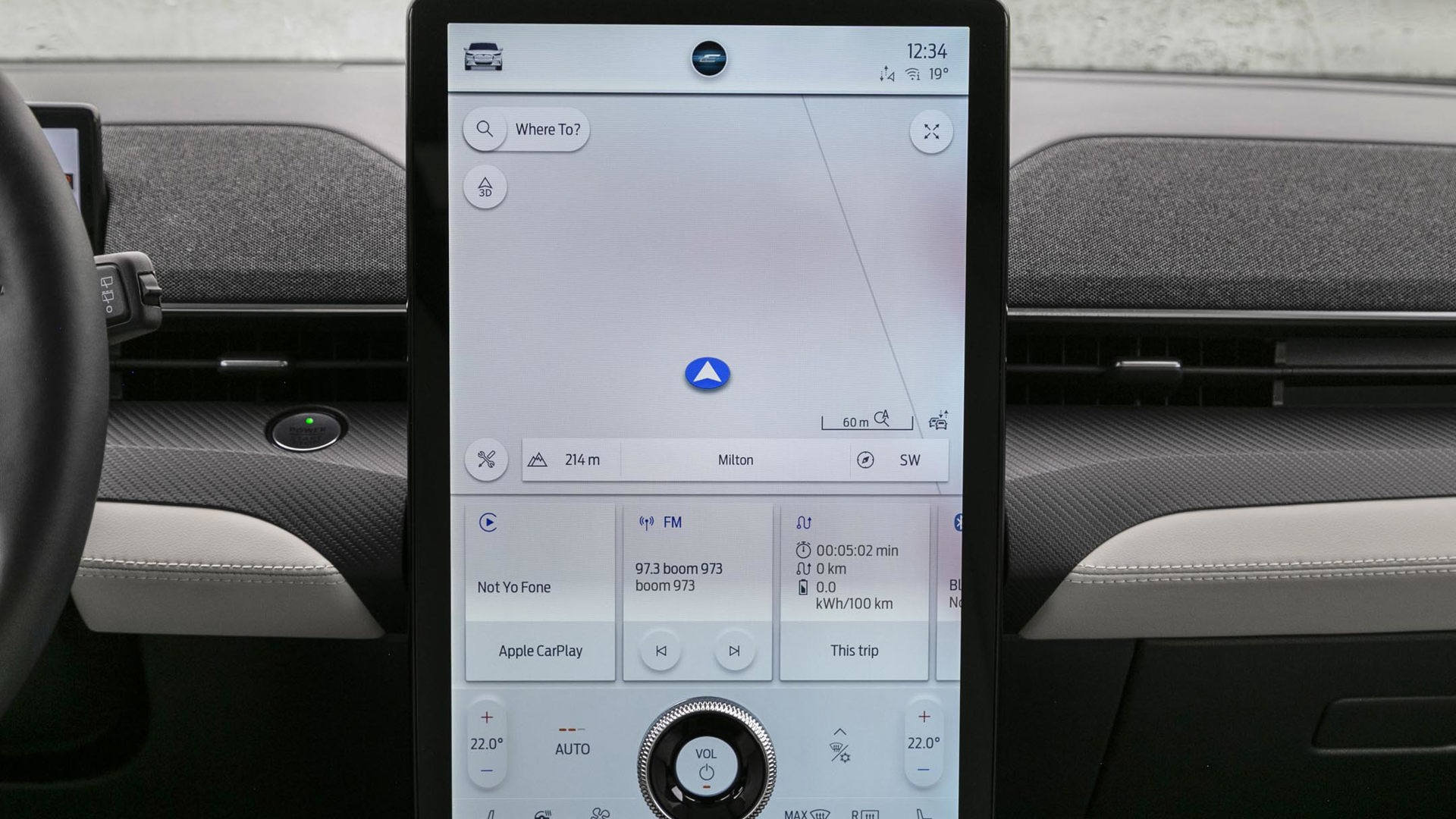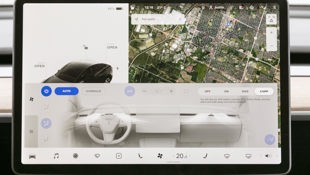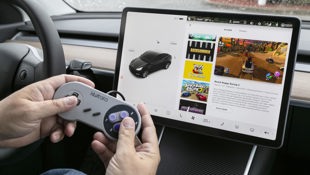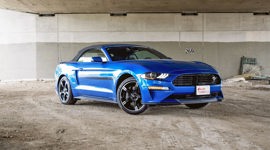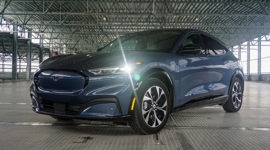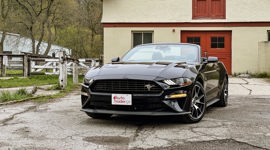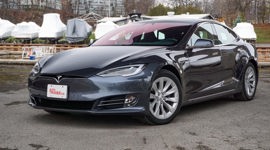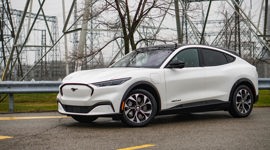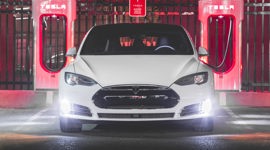Comparison Data
|
2021 Ford Mustang Mach-E Premium AWD
|
2021 Tesla Model Y Dual Motor Long Range
|
|---|---|
|
Engine Displacement
258 kW
|
286 kW
|
|
Engine Cylinders
88 kWh battery
|
75 kWh battery
|
|
Peak Horsepower
346 hp
|
384 hp
|
|
Peak Torque
428 lb-ft
|
376 lb-ft (estimated)
|
|
Fuel Economy
2.4 / 2.8 / 2.6 Le/100 km, 21.8 / 25.0 / 23.2 kWh/100 km cty/hwy/cmb
|
1.8 / 2.0 / 1.9 Le/100 km, 15.9 / 17.9 / 16.8 kWh/100 km cty/hwy/cmb
|
|
Cargo Space
1,690.5 L
|
1,920 L
|
|
Base Price
$62,245
|
$69,990
|
|
A/C Tax
$100
|
$100
|
|
Destination Fee
$1,900
|
$1,280
|
|
Price as Tested
$72,145
|
$83,270
|
|
Optional Equipment
$7,900 – Metallic Paint, $550; Extended Range battery, $7,000; Interior Protection Pkg, $350
|
$11,900 – Black paint, $1,300; Self-Driving Capability, $10,600
|
There hasn’t been a bigger disruptor in the auto industry in recent years than Tesla.
Led by quirky billionaire Elon Musk, Tesla has done more to advance the electrification of automobiles than any other company by constantly setting new standards for range and performance, and for creating its own mammoth global charging infrastructure.
Recognizing the environmental and performance benefits of electric vehicles (EVs), not to mention growing consumer interest, other manufacturers have scrambled in pursuit – and a few legitimate competitors have emerged in the process. The latest is the 2021 Ford Mustang Mach-E, a crossover that’s ready to go toe-to-toe with the Tesla Model Y.
In the absence of a media fleet for evaluations like this one, Toronto-based technology architect Justin Cohen generously offered AutoTrader.ca his 2021 Tesla Model Y Long Range for a head-to-head battle with the 2021 Ford Mustang Mach-E Premium AWD.
Styling
In the world of EVs, function usually trumps form in the name of efficiency, and that’s mostly the case here. From the awkward-looking grille-less noses to tall greenhouses sweeping up over Quasimodo hunchbacks, neither one of these crossovers is a beauty queen.
Ford has imbued the Mach-E with enough Mustang design elements to help justify the controversial galloping pony badges, and got downright clever with the pinched midsection and black roofline spoiler that creates the visual illusion of a slimmer profile.
The Model Y is unmistakably a Tesla, bearing close resemblance to its larger Model X cousin, but from most angles it’s overly tall and skinny, and resembles a well-used bar of soap on wheels. Still, with a superior coefficient of drag – that’s what helps a vehicle slip through the air as efficiently as possible – the Tesla’s look is a practical one.
Inside, Ford has designed a sleek, stylish, and contemporary cockpit that blends contrasting colours and textures. There’s an upmarket feel to the Mach-E’s interior that’s let down only slightly by the cheap-feeling rotary dials for gear selection and volume control.
Tesla has taken the simplicity theme to an extreme, leaving an enormous touchscreen supported only by two scroll controls on the steering wheel. Even fundamental tasks like mirror adjustments are handled via the steering wheel buttons. None of the materials look or feel overly lavish, and the net result is an aesthetic that could have drawn inspiration from modern Norwegian prisons.
Mustang Mach-E: 7.5/10; Model Y: 6/10
Practicality
EV buyers willing to accept pragmatic-if-not-passionate style will be rewarded with decent overall practicality. With four doors and a hatchback, the Mach-E can accommodate four or five occupants, while the back seats split and fold to expand the rear cargo area to nearly 1,700 L. There’s a small under-floor space in the cargo hold, and a cubby up front where an engine would normally reside that offers up enough room for a few grocery bags.
As useful as the Mach-E appears, it pales in comparison to what the Model Y has to offer. Considering its small overall size, Tesla’s cleverness in space utilization for both people and stuff is mighty impressive. The awkward proportions allow for abundant headroom front and rear, and the tall windows and glass roof make for a very open and airy feel – even with dark material finishes on a dull and rainy test day.
The Model Y’s rear seats offer room for three, with the front seat console carved out to allow extra foot room for a central occupant in the back. Tesla even offers optional third-row seats, though they don’t look especially spacious.
Without the third-row seats, the cargo hold tops 1,900 L, and the space beneath the rear cargo floor is large enough to swallow a large duffle bag, while the frunk is big enough to accommodate another one. If that’s not enough, the Model Y is rated to pull 1,600 kg (3,527 lb), whereas towing isn’t recommended for the Mach-E.
Mustang Mach-E: 7/10; Model Y: 10/10
Comfort
The serenity of electrified cars is among their most appealing qualities. Both the Model Y and Mach-E are well-insulated against road and wind noise, and the absence of a noisy, vibrating engine offers a tranquil motoring experience that not even a Rolls-Royce can top. It also makes for a great place to listen to music, and the Ford’s 10-speaker sound system is nearly a match for Tesla’s 14-speaker setup as far as sound quality.
But neither of these cars can compete with proper premium models in terms of ride quality. The Mach-E’s suspension is tuned for sporty handling over poshness, but it still manages to absorb bumps better than the Tesla’s harsher setup that sends impacts and noises through the cabin over moderate road imperfections.
The Model Y and Mach-E both offer heated front seats and steering wheels, but only the Tesla’s second-row seats are heated. Neither car has leather finishes, but where the Ford’s synthetic upholstery is perforated, the smooth Tesla seats provide no breathability at all. Long-legged drivers will also find the Model Y’s shorter lower seat cushion lacks thigh support.
Mustang Mach-E: 8/10; Model Y: 7/10
Features
Tesla’s approach to car building is not only revolutionary, but imbued with plenty of Musk’s personal quirks, much of it to the buyers’ benefit – or at least amusement. Haven’t we all wanted to whip out a controller and play video games when parked? How about a pandemic-era date night with take-out food and on-board Netflix? And what kid wouldn’t find it hilarious to ride around in a car programmed to fart every time the turn signal is activated?
These are, for the most part, party tricks, but evolving tech is central to the Model Y’s ownership experience and it’s constantly being updated over the air. For instance, a so-called “pet mode” keeps the climate control going while the vehicle is parked, and a large notice appears on the dash screen to inform passersby that Fido isn’t being baked inside.
Specced with the full suite of advanced autonomy features, Summon mode allows the car to drive itself unattended for short distances, (such as the other end of a parking lot) to collect its driver. It’ll also park itself, make unassisted lane changes, and recognize and react to traffic lights in the city. Tesla’s systems are not without controversy, however, and your author’s own experience had the car execute a stop to avoid a non-existent threat, causing momentary panic.
The Mach-E is loaded up with Ford’s high-tech systems and features its own self-parking and adaptive cruise control and lane-centring, plus it’s fitted with the hardware for Ford’s upcoming feature that will permit hands-free driving on specific highways.
Mustang Mach-E: 8/10; Model Y: 9.5/10
User Friendliness
Ford has also enabled its phone-as-a-key system, tied in with its FordPass smartphone app. While the app enabled remote monitoring of the charge status during testing, plus info like the car’s tire pressure, it did little else. Repeated setup attempts were unsuccessful, and there is currently a recall out to fix the feature. Beyond that, the menu system and nearly all vehicle functions are operated in a familiar way despite just about all of them being accessed through the 15.5-inch centre touchscreen.
Similarly, it takes a bit of time to get used to the absence of buttons or conventional gauges in the Model Y’s cockpit, but otherwise the functionality and design are intuitive. Unlike the Ford, the Tesla comes only with a card-like key to be used when an owner’s phone is unavailable; otherwise, the phone-based app provides incredible connectivity and control over the vehicle. With the owner’s phone, a driver simply slips into the seat, buckles up, selects drive, and the Model Y motors away. Android Auto and Apple CarPlay fans take note: neither is available in the Tesla, but it probably won’t matter – especially since Tesla’s system multitasks so much better.
A major point of difference between these two is the usability of the charging process. The Model Y is always connected to Tesla’s 25,000-strong network of chargers that factors location and charge times into navigation directions, helping to eliminate the challenges faced by road-tripping with an EV. And because the Tesla is already tied to the driver’s account, there’s no additional payment step in the process.
Conversely, despite using both Petro Canada’s EV system app, and Chargepoint, I encountered multiple occasions where either a quick charger was unavailable, not functioning properly, or simply wouldn’t work with my app to register a payment enabling a charge, all of which added time and frustration to my Mach-E road trip.
Mustang Mach-E: 7.5/10; Model Y: 10/10
Fuel Economy
Arguably even more important than the ease of charging is the vehicle’s range, and once again Tesla’s leadership in the EV segment is evident. Wading through the details of battery size – the Mach-E’s long-range battery is 88 kWh versus the Model Y’s 75 – and charge rates can be baffling.
In terms of range, the Mach-E Premium AWD tested is rated for 435 km. A rear-wheel-drive version with the same battery pack ostensibly bumps that to more than 480 km. The Model Y Long Range like the one tested is rated at 525 km despite its smaller battery, and that’s with its dual-motor AWD system.
When looking at their consumption rates, the Mach-E isn’t particularly efficient by EV standards, with an official average of 23.2 kWh/100 km versus the Model Y’s 16.8 kWh. Based on government estimates, this means it is likely to cost the average driver $603 a year to charge the Mustang versus $437 for the Tesla.
What’s more, although the Mach-E is capable of using DC fast chargers, Tesla’s Superchargers can still juice up quicker, and the fastest experienced during testing was 128 kW for the Ford versus a blazing 230 kW for the Tesla. Nevertheless, both of these vehicles can achieve meaningful charges within a very reasonable 30 minutes on a fast charger.
Mustang Mach-E: 7.5/10; Model Y: 9/10
Power
Further proof of the Tesla’s impressive efficiency is its ability to convert its battery’s energy into meaningful forward thrust. While the Mach-E is rated at 346 hp and a burly 428 lb-ft of torque, its additional 230 kg (500 lb) over the Tesla mean the Model Y’s 384 hp (and estimated 376 lb-ft) help it feel appreciably quicker. Still, acceleration from both of these cars is genuinely exciting with ample, immediate power available whether pulling away from a stop or passing at highway speed. Higher-thrust Mach-E GT Performance and Model Y Performance versions exist for the truly power-hungry with budget to spare.
Mustang Mach-E: 8/10; Model Y: 8.5/10
Driving Feel
While the Tesla might be quicker, the Ford’s superior suspension tuning not only affords it a better ride, but also more precise steering feel. Mid-corner bumps that can cause minor shudders in the Model Y are better absorbed by the Mustang, yet the Ford also manages good body control. The Mach-E is fitted with notably narrower tires than the Model Y, and when driven with gusto on a wet test day, the Mustang was willing to slide its tail end out when the Tesla would stay resolutely planted at all four corners.
Both cars utilize one-pedal drive modes that enable strong regenerative braking to harvest as much kinetic energy for battery regeneration as possible. The Mach-E’s is particularly aggressive, though both systems are easy to use.
Mustang Mach-E: 7.5/10; Model Y: 7/10
Safety
Being rolling technological showcases means each of these cars are loaded up with active safety features to help them stay out of harm’s way. While the Mach-E is still too new to have been tested by the United States National Highway Traffic Safety Administration (NHTSA) or Insurance Institute for Highway Safety (IIHS), the Model Y has earned top marks across the board with the caveat that mid-way through 2021 Tesla made the decision to remove radar from its sensor system that may affect its future crash avoidance test results.
Mustang Mach-E: 8.5/10; Model Y: 9/10
Value
Buyers willing to settle for the smaller battery pack and rear-wheel drive can get a base Mach-E for $52,395. Add all-wheel drive, the 88 kWh battery, and the blue paint seen here, and the tally is nearly $70,000.
Having now removed the standard-range version of the Model Y from the lineup, the most affordable one is this dual-motor long-range that starts at $69,990. Tech nerds will insist on the extra $10,600 for the autonomous driving option, but even without, Tesla’s standard system enables adaptive cruise control, so it’s an easy option to skip.
Mustang Mach-E: 7/10; Model Y: 7.5/10
The Verdict
Comparably specced, Ford has priced the Mach-E to slot in just under the Tesla Model Y. Ford draws from more than a century of building cars and has figured out some of the quality control annoyances faced by Tesla owners like wonky panel gaps, or the rapidly deteriorating paint on the car tested here. These details can be annoying to live with over time, and may speak to larger future problems, but the superior technology, range, performance, and practicality of the Model Y often outweigh seemingly minor hiccups for many potential buyers looking to make the leap to an EV. While Tesla should be seriously looking over its shoulder at the Mustang nipping its heels, the Model Y is the EV to choose.
